What Is Print on Demand? A Streetwear-Friendly Primer
Print on Demand (POD) is a retail fulfillment method where products are created only after a customer places an order. In practical terms, it means you can design a streetwear item (like a T-shirt or hoodie) and offer it for sale without holding any inventory. A third-party supplier handles the printing, packaging, and shipping for each item as orders come in. This model eliminates the need for bulk manufacturing upfront. Companies like CJdropshipping, or Printify are popular POD providers – they let you upload your artwork onto blank apparel (tees, hoodies, caps, etc.), and they print and ship each item on-demand under your brand.
For streetwear entrepreneurs, POD is a game-changer. Traditional clothing production requires guessing which designs and sizes will sell (often resulting in leftover stock or missed opportunities). With POD, you only produce what actually sells. This makes it perfect for the fast-paced streetwear scene, where trends can emerge and fade quickly. You can drop a new graphic tee design inspired by a current meme or cultural moment, and if it flops – no harm done, since you didn’t pre-print hundreds of units. Conversely, if it blows up in popularity, your POD partner will keep printing to meet demand without you ever running out of stock.
Another benefit is the low barrier to entry. You don’t need thousands of dollars to invest in inventory or printing equipment. You can start a streetwear brand from your laptop – focusing on design and marketing – while the POD supplier takes care of production. Essentially, print on demand lets independent designers and small brands compete in the fashion market by eliminating upfront costs and risks. As one guide summarizes, a POD supplier prints and ships products on behalf of the seller with “zero inventory cost,” allowing a wider product variety without the overhead of traditional manufacturing.
POD is very streetwear-friendly because it supports the culture of limited drops, creative graphics, and collaboration. You can experiment with bold designs, niche references, and artist partnerships on apparel without long lead times. Each item is printed only when someone actually wants it – a sustainable approach that reduces waste and gives you flexibility to adapt your line on the fly. In short, Print on Demand is an ideal foundation for a modern streetwear brand: it’s agile, cost-effective, and lets you channel all your energy into design and brand-building rather than inventory management.
Why Print on Demand Is the Best Model for Streetwear in 2025
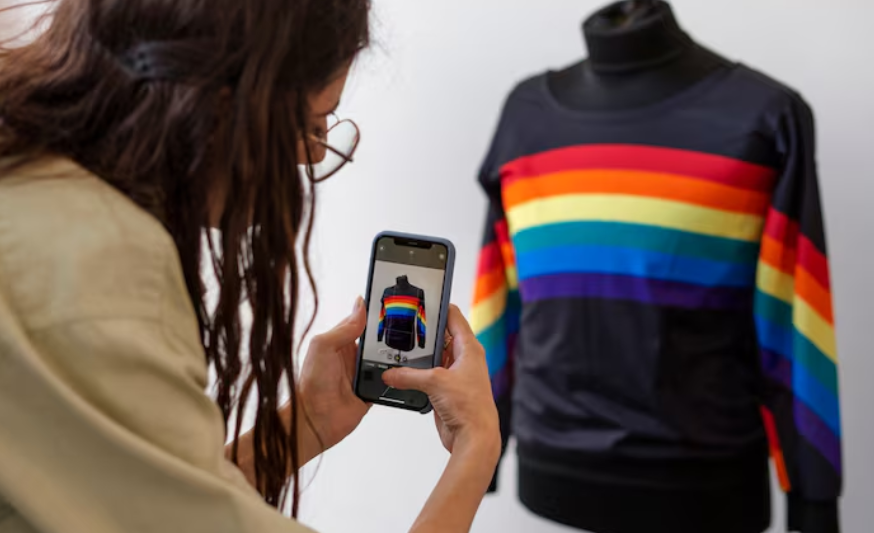
Streetwear in 2025 moves at the speed of the internet. Trends are born on social media overnight, and consumer tastes evolve rapidly. Print on Demand is arguably the best business model to keep up with this pace, enabling brands to stay flexible and relevant. Here’s why POD shines especially bright in the streetwear world of 2025:
-
Zero Inventory Risk: Streetwear thrives on fresh designs and sometimes quirky, experimental ideas. With POD, you’re not stuck with boxes of unsold shirts if a design doesn’t hit – you only produce items that customers have ordered. This “low risk” approach means you can test designs or niche concepts freely. If a certain graphic or slogan isn’t resonating, simply swap it out for a new idea next week. This rapid iteration is vital in 2025’s trend-driven streetwear market.
-
Fast Design-to-Market Cycle: In the past, getting a new design onto shelves could take months (finding a printer, doing bulk production, shipping inventory, etc.). Now, you can create a design and have it live on your store the same day with POD. Production begins as soon as someone orders. This speed means your brand can capitalize on cultural moments or viral trends immediately. For example, if a particular aesthetic (say Y2K nostalgia or a certain anime graphic) is hot this season, you can launch related merch right now instead of missing the wave. Being first and fast is a huge competitive advantage in street fashion.
-
Global Reach with Minimal Hassle: Streetwear is a global phenomenon, and fans from New York to Tokyo often chase the same drops. Print-on-demand suppliers typically have international fulfillment or partnerships that allow relatively fast worldwide shipping. Many POD platforms have fulfillment centers in North America, Europe, Asia, etc., so your customers can get their orders without waiting months. You, the brand owner, don’t have to handle any customs or international logistics – the supplier takes care of it. This means a small indie brand can “tap markets in North America, Europe, Australia, and beyond without local warehouses,” enjoying a global customer base from day one.
-
Cost Efficiency and Scalability: Because you’re not paying for inventory upfront, your initial costs stay low. This is perfect for young entrepreneurs or creators starting a streetwear line as a side hustle. As orders grow, POD scales with you seamlessly – print providers will automate more production without you needing to change anything. Whether you sell 10 shirts or 10,000 shirts next month, you won’t be scrambling to fulfill them; your POD partner absorbs the operational scaling. That lets you focus on maintaining the brand’s vibe and community. In 2025, some streetwear POD brands have even scaled to millions in revenue with tiny in-house teams – all thanks to this leverage of third-party fulfillment.
-
Supports Streetwear’s Creative Diversity: Streetwear isn’t just one style – it ranges from minimalist luxury to graphic-heavy skate apparel. Print on demand accommodates this diversity easily. You can print complex full-color artwork across a tee, do embroidery on a dad hat, print all-over patterns on a bomber jacket, etc., by choosing POD services that offer these options. There are no minimum order quantities, so you can offer a wide catalog (tees, hoodies, hats, bags, even stickers and art prints) to complement your clothing line. A broad product range is available to you without financial risk. This means your 2025 streetwear brand can be not just a T-shirt line, but a multifaceted lifestyle brand with minimal upfront investment.
-
Continuous Income from Evergreen Designs: In streetwear, some designs or logos become iconic and sell for years. With POD, you can keep a classic design “in stock” forever without tying up money. For example, if you have a signature logo hoodie that remains popular, you don’t need to predict demand or hold inventory season after season – it’s always available on-demand. This way, your brand can build up a catalogue of evergreen products that generate passive sales, while you continue dropping new limited-edition items on top.
In 2025, POD aligns perfectly with streetwear’s drop culture and online-first nature. Streetwear customers are used to shopping online, following brands on Instagram/TikTok for the latest releases, and appreciating the limited or made-to-order aspect as part of the exclusivity. Print on demand lets you serve this audience with exactly what they want, when they want it. You can keep your brand fresh by frequently updating designs, collaborate with artists for one-off capsule collections, or do small “test” drops to gauge interest – all without overextending your budget.
Finally, the post-2020 boom in e-commerce and improvements in POD tech (like better print quality and more product options) have matured by 2025. We have Direct-to-Garment printers producing vibrant, durable prints and suppliers like CJdropshipping or Printful achieving shipping times of a week or less in many regions. Customer expectations for online brands (fast shipping, quality products) can now be met by POD providers. In summary, print on demand isn’t just a convenient fulfillment method – it’s a strategic advantage for building a nimble, creative, and profitable streetwear brand in 2025.
15 Best Streetwear Products for Print on Demand
A streetwear enthusiast showcasing a bold graphic tee – one of the top print-on-demand products for urban fashion.
One of the beauties of print-on-demand is the huge variety of items you can customize. Streetwear isn’t limited to just T-shirts – modern POD suppliers offer everything from apparel to accessories, allowing your brand to expand into all the gear your audience loves. Below are 15 of the best streetwear products suited for print-on-demand. These are popular item categories that resonate with streetwear consumers and can be sourced through POD companies:
-
Graphic T-Shirts: The cornerstone of streetwear. A comfortable tee with a bold graphic or logo is a canvas for self-expression. POD tees come in various fits (standard, oversized, longline) and fabrics. This is usually your best-selling product type, and luckily all POD suppliers offer a wide range of T-shirts (in different colors, qualities, and even eco-friendly fabrics). Streetwear fans often collect tees, so having strong designs here is key.
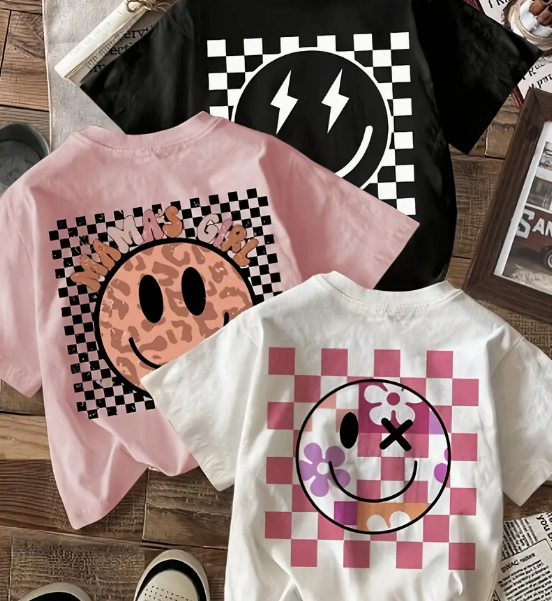
-
Hoodies & Pullovers: Hooded sweatshirts are a streetwear staple, especially for fall/winter or year-round layering. With POD, you can print large designs on the front/back or even do embroidery on the chest for a high-end touch. Heavyweight hoodies are particularly popular in streetwear for that oversized, cozy look. Consider offering both pullover and zip-up hoodies. Many print providers have premium blank hoodies (e.g., cotton fleece) that streetwear customers will appreciate.
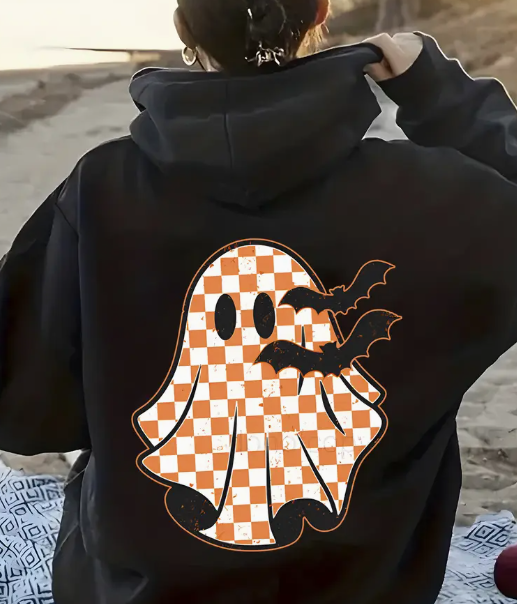
-
Crewneck Sweatshirts: For those who want the comfort of a sweater without the hood, crewnecks are a classic. Often associated with retro streetwear vibes, a crewneck with a bold printed phrase or an embroidered emblem can be very stylish. They’re great for showcasing a logo or simpler design. POD makes it easy to add crewnecks to your line alongside hoodies, usually in matching colors.
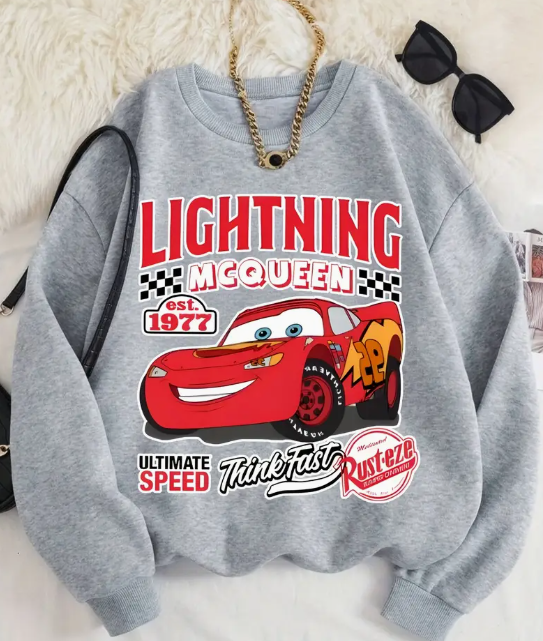
-
Long-Sleeve Tees: Sort of a hybrid between a tee and a sweatshirt, long-sleeve T-shirts are perfect for layering. Streetwear brands often use sleeve prints (e.g., lettering down the arm) to add extra flair. You can get creative with prints on the sleeves plus front/back. Long-sleeves are popular in skate culture and for transitional weather. They add diversity to your shirt offerings.
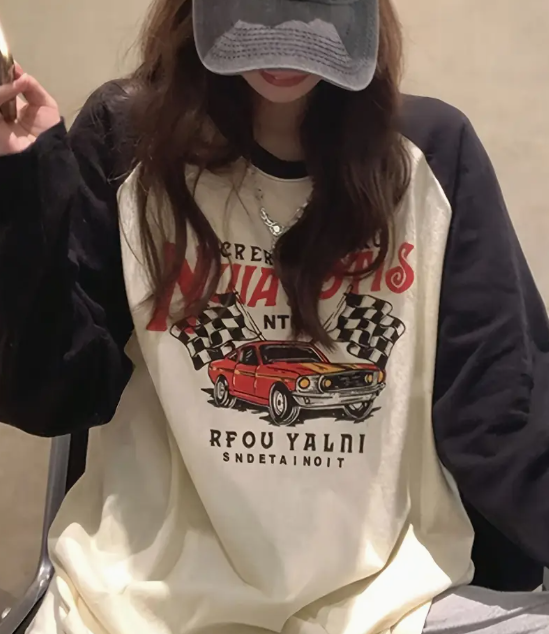
-
Caps & Snapbacks: Hats are huge in streetwear – think baseball caps, snapbacks, and even bucket hats. Many POD suppliers offer embroidered caps (you upload a design, and they stitch it onto the hat). A cap with your logo or a cool phrase can become a signature item. For example, a flat-bill snapback with a bold 3D embroidered logo could really elevate your brand’s presence. Hats are also one-size-fits-all products, making them easy to sell online.
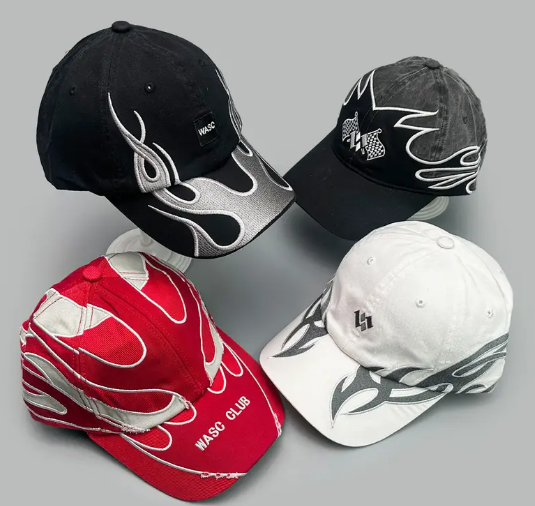
-
Beanies: In colder seasons or simply for style, knit beanies are popular. POD services often provide embroidery on beanies as well. A simple cuffed beanie with a small woven label or embroidered patch of your logo can look very premium. Streetwear outfits often incorporate beanies for that skater or urban winter look. They’re low cost to produce and can have good profit margins with the right branding.
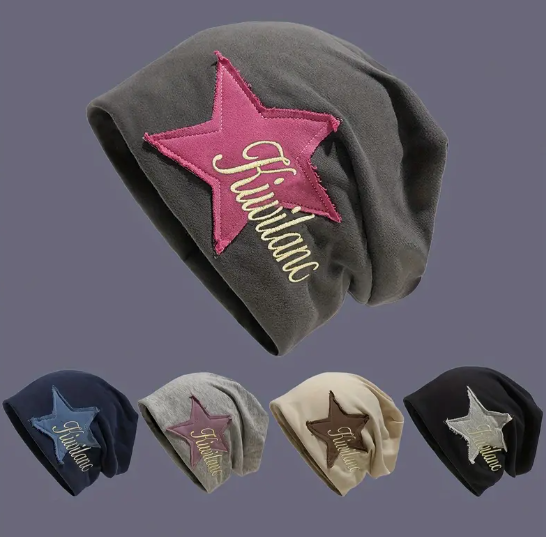
-
Jackets (Windbreakers/Bombers): Lightweight jackets like windbreakers, coaches’ jackets, or bomber jackets are on-trend and many POD companies now offer them. Usually these are done with all-over printing (sublimation) or embroidery for small logos. A printed windbreaker with a striking pattern or text on the back can become a standout piece in your collection. Because jackets have higher perceived value, you can price them higher – appealing to serious streetwear aficionados.
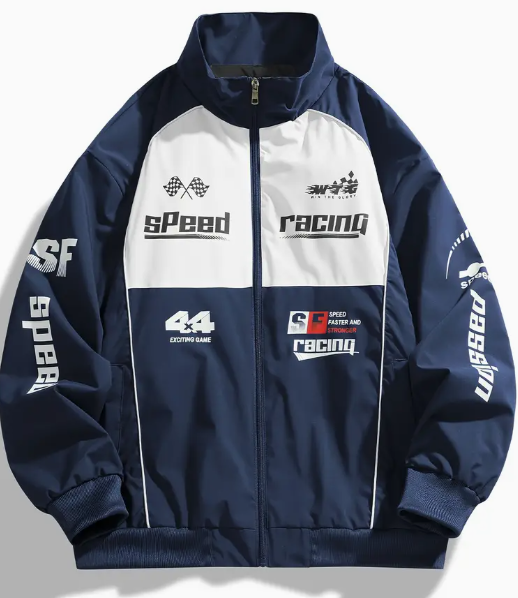
-
Joggers & Sweatpants: Streetwear has fully embraced sweatpants and jogger-style pants as fashion. POD suppliers (like Printful, etc.) offer sweatpants you can embellish with side prints or small logos. For example, printing your brand name down the leg or a logo on the thigh. Matching sweatsuit sets (hoodie + sweatpant) are very popular – you can create sets without actually stocking inventory by just offering both pieces via POD. The comfort-meets-style trend means a lot of customers love rocking branded joggers for everyday wear.
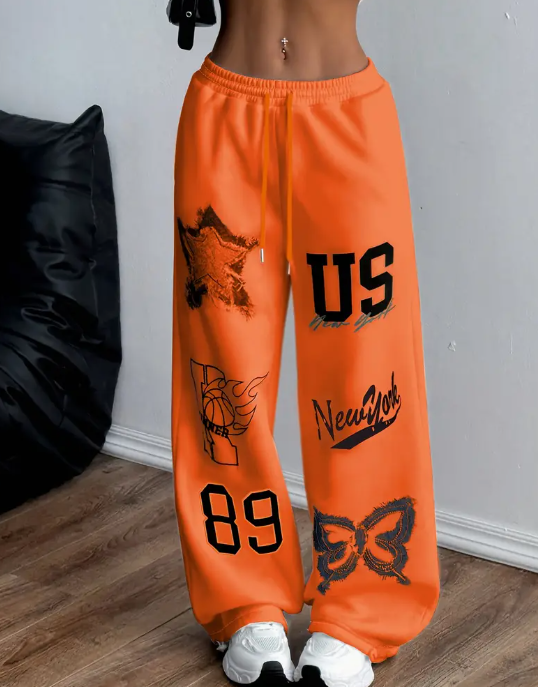
-
Shorts: From mesh basketball shorts to casual jersey shorts, these are great for spring/summer street style. Some print-on-demand vendors have athletic shorts or even swim shorts that you can customize (with all-over prints or patterns). A pair of bold graphic shorts (say with graffiti-style text or a monogram pattern) can complement your T-shirt sales in warmer months. Streetwear isn’t just about tops – a cohesive outfit includes cool bottoms too.

-
Socks: Believe it or not, socks have become a fun streetwear accessory (think of the trend of visible socks with slides or sneakers). You can do sublimation printed socks with patterns or phrases. While socks are a lower-price item, they can be great for upsells or as part of a bundle (e.g., “buy a hoodie, get matching socks”). They’re also a nice way for fans to rep your brand more subtly.
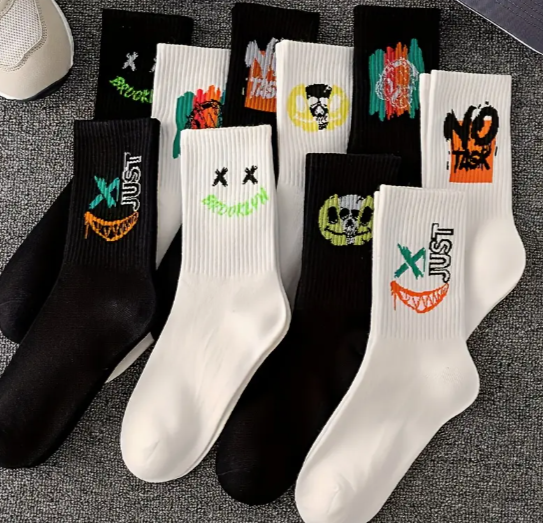
-
Patches: Custom patches (embroidered or woven) are a nod to classic streetwear and DIY culture. Some POD services or dropshipping suppliers offer iron-on patches with your designs. Your customers can stick them on jackets, backpacks, hats – anywhere. Patches featuring your logo or artwork not only are merch themselves, but they encourage buyers to personalize their gear, effectively spreading your brand. They’re small, affordable, and very on-trend with the revival of retro styles.
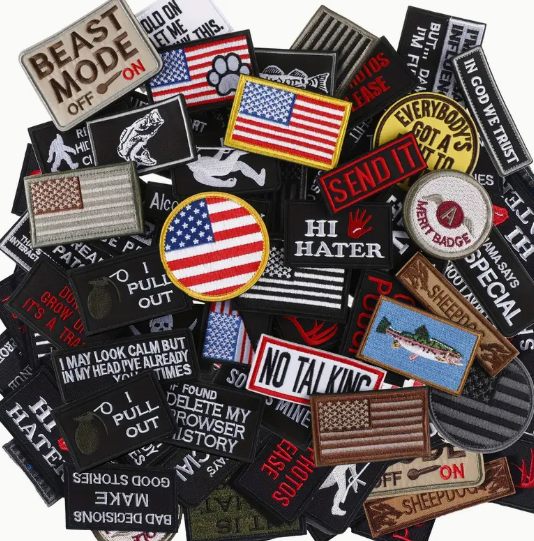
-
Tote Bags: Streetwear overlaps with lifestyle, and tote bags have become a popular accessory (for carrying skate gear, groceries, whatever – all with style). POD totes are usually canvas and print area is large, perfect for big bold graphics. A sturdy tote with your brand’s logo or a cool design can be both practical and hype. It essentially turns your art into a mobile billboard. Many consumers love totes as an eco-friendly alternative to plastic bags too, so it adds a positive association.
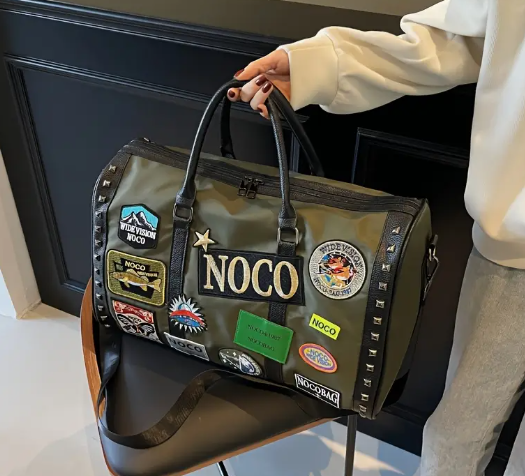
-
Backpacks & Sling Bags: Along with totes, small backpacks or sling bags (like crossbody fanny pack style bags) are common streetwear accessories. Some print-on-demand platforms offer all-over-print backpacks or chest bags. These allow for very eye-catching designs – imagine a backpack covered in your signature pattern or character art. Functional items like bags, when made stylish, are big in the streetwear scene (just look at the popularity of brands like Supreme’s fanny packs). With POD, you can offer these without having to bulk-produce them yourself.
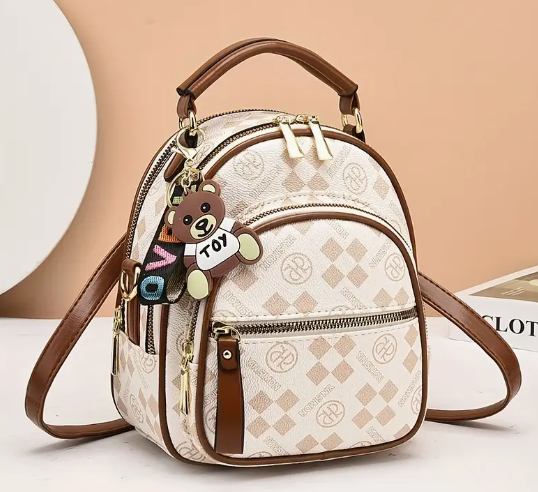
-
Sneakers or Footwear: This is a more advanced option, but worth noting – a few POD providers allow custom printed shoes (like high-top canvas sneakers or slide sandals). Sneakers are central to streetwear, and while building a shoe line is tough, POD can let you dabble in it. For example, Printify has some sneakers you can print designs on, and certain vendors offer custom slides (sandals) where you can print across the strap. Quality varies, but if you find a good supplier, offering limited-run shoes with your patterns can really set your brand apart. Even if it’s not your main seller, it garners attention.
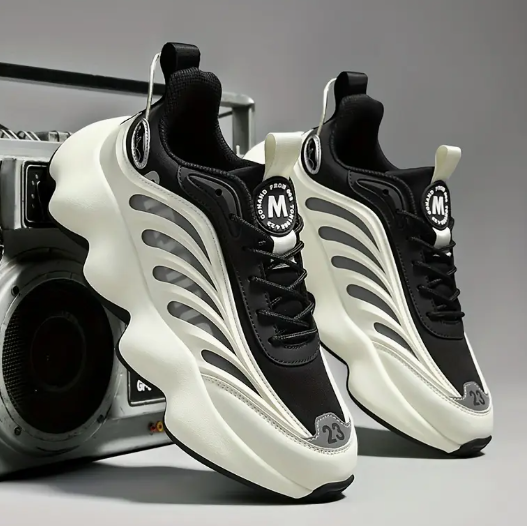
-
Face Masks & Bandanas: Post-2020, face masks became both practical and stylistic. By 2025, masks aren’t as ubiquitous as they were, but in many cities people still wear them – and they’ve become part of fashion (especially in some Asian streetwear scenes). POD can print masks or multifunctional bandana gaiters with your designs. Similarly, bandanas and balaclavas can be offered to complement certain looks (think of how some skateboarders or bikers wear bandanas – a branded one ties into your clothing line nicely). While these may be niche items, they can round out a streetwear catalog and show your brand’s attention to detail in outfitting the consumer from head to toe.

These 15 product categories give you a versatile arsenal to build your streetwear brand. You certainly don’t need to launch with all of them at once – many brands start with the holy trinity of tees, hoodies, and hats, then expand. Print-on-demand makes it easy to gradually add new product types as your brand grows. Importantly, all these products carry the essence of streetwear: they’re casual, expressive, and meant to be mixed into daily outfits. By selecting quality blanks (e.g., using well-known streetwear blank brands like Gildan Heavyweight tees or Champion hoodies if available via your POD supplier) and putting great designs on them, you’ll have a strong product lineup.
Remember to order samples from your POD supplier for any new product type you add. Check the print quality, sizing, and overall feel. A hoodie print might look different than a tee print; an embroidery on a cap might need tweaking for best results. Testing ensures that the “look and feel” of each item matches your brand’s standards. Streetwear customers are often quite discerning about fit and quality, so it’s worth choosing premium options when available (for instance, many brands opt for heavier 100% cotton tees or fleece hoodies for that luxe streetwear quality). The good news is that top POD platforms do offer premium garments – and you can always switch providers for specific items to get the best blanks.
In summary, print on demand lets you offer an entire streetwear wardrobe without upfront production. From headwear down to socks, you can deck out your fans in your brand. Start with core pieces and expand to these other product categories as you gain traction. The variety will not only open new revenue streams but also strengthen your brand identity as a complete streetwear label rather than just a “t-shirt brand.”
How to Choose a Print on Demand Supplier for Streetwear
Not all print-on-demand services are created equal. Choosing the right POD supplier (or partners, since you might use a couple) is crucial for your streetwear brand’s success. Your supplier handles your precious designs, prints them on products, and ships them to your customers – in many ways, they’re the behind-the-scenes engine of your business. Here are key factors and tips for selecting the best POD supplier for your streetwear brand:
-
Product Catalog & Quality: First, ensure the supplier offers the types of products you need (see the list above). Do they have high-quality hoodies? Heavyweight tees? Embroidered caps? If your brand identity leans on certain items (say, pigment-dyed crewnecks or all-over-print jackets), make sure the supplier carries them. Check product descriptions for material (100% cotton vs blends, fabric weight, etc.) and look for reputable blank brands. Quality is paramount in streetwear – thick fabrics, durable stitching, vibrant printing. Read reviews or order sample products to judge print vibrancy and garment feel. A great POD supplier will have premium streetwear-friendly options available. For example, Printful’s catalog has premium hoodies and even brands like Champion or Bella+Canvas, whereas some cheaper PODs might only have generic thin hoodies. Striking the right balance of variety and quality is key.
-
Printing Methods & Technology: Investigate what printing methods the supplier uses for apparel. Direct-to-garment (DTG) printing is standard for most print-on-demand tees and hoodies – good for full-color designs. Some now offer Direct-to-Film (DTF) transfers as well, which can yield more vivid colors on certain fabrics. If you need embroidery (for hats or logos) or dye-sublimation (for all-over prints), check that those services are provided. Quality of printing can vary by provider – for instance, CJdropshipping is known for very crisp DTG prints and quality control, while some smaller providers might have occasional misprints or color differences. Look for a supplier that keeps their machines and processes up to date. This ensures your intricate graffiti designs or high-detail logos come out looking sharp on the garment.
-
Shipping Speed and Locations: In streetwear, hype can die fast – if customers wait 4 weeks for a shirt, they might lose enthusiasm (or patience). Look for suppliers with fast fulfillment times and regional print facilities. For example, Printful fulfills in 2–5 days on average and has centers in North America, Europe, etc., meaning a customer in New York or London might get their order in about a week. Similarly, CJdropshipping has multiple U.S. warehouses that can deliver in as quick as 2–7 days for domestic orders. Consider where your target customers are. If a supplier only ships from Asia and your customers are U.S.-based, transit time (and possible customs delays) could hurt the experience. Ideally, choose a POD partner with fulfillment on the same continent as your key markets. Also compare shipping rates – some providers have higher base product costs but cheaper shipping, others vice versa. Many suppliers list typical shipping times and costs; use that info to ensure you can offer reasonable delivery times.
-
Integration with Your Store Platform: Good POD suppliers have apps or plugins for major e-commerce platforms (Shopify, WooCommerce, Etsy, etc.). This integration is what makes your life easier – orders should flow automatically from your store to the printer, and tracking numbers should sync to your shop when shipped. Check that the supplier supports your platform and read up on how smooth the integration is. A seamless integration means: automatic order import, live stock updates (for blanks), and auto fulfillment. For example, CJdropshipping and Printful both integrate with Shopify in a few clicks, and they will handle orders without manual input. Some smaller suppliers might require you to manually export orders – which can become a headache as you scale. Ease of use is important. As one guide puts it, pick a POD platform that works well with your store so you have “smooth order processing and efficient inventory management.”
-
Pricing and Profit Margins: Compare the base prices of products on various POD platforms. There can be notable differences – one supplier’s blank hoodie might cost $15, another’s $25 for similar quality. Also factor in shipping costs and any monthly fees or premium account costs. Your goal is to maintain healthy profit margins (aim for around 40% or more on apparel). If one supplier has significantly lower costs on the items you plan to sell, that’s a big plus. However, watch out for trade-offs: sometimes cheaper base cost could mean lower print quality or slower shipping. It’s about value, not just price. Printify, for instance, often offers lower base prices than Printful because it sources from a network of print providers, and it even has a Premium plan ($24.99/mo for 20% off all items) which can boost your margins if you have volume. Calculate a few sample scenarios (e.g., for a T-shirt: base price + printing + shipping vs. what you’ll charge) to see which supplier lets you hit your target margins. Also note any extra fees: some charge for inside label printing, etc.
-
Custom Branding Options: A huge part of streetwear is branding – things like custom neck labels, branded packaging, and unique inserts elevate the customer experience. Some POD suppliers offer white-label services (meaning no supplier branding on the shipments) by default, which is good. Others go further: Printful lets you add inside label prints for an extra fee, or include a custom pack-in flyer in orders. CJdropshipping shines here as well, allowing custom packaging and labels; they even can insert thank-you cards or your logo stickers into shipments. Apliiq, another specialized POD, can sew on custom labels for your clothing (making your tees truly seem manufactured by your brand). When choosing a supplier, see what branding services they have – especially if you want to build a premium brand. Even a simple thing like having your logo on the packing slip instead of the supplier’s name helps maintain brand consistency. In 2025, many POD solutions understand the importance of branding, so look for those that treat your orders neutrally (no promotional materials for themselves in your packages) and preferably those that help you brand the product as your own.
-
Supplier Reputation & Support: Do some research on the supplier’s reputation. Read reviews or community discussions (the r/printondemand subreddit, for example, has tons of user experiences). Are there frequent complaints about printing mistakes, inventory stock-outs, or slow customer support? A reliable supplier will have high on-time fulfillment rates and responsive support in case something goes wrong. Because if an order has an issue (wrong size shipped, print error, etc.), you will hear about it from your customer, and you need the supplier to fix it quickly. Check the return/reprint policy: good POD services will reprint or refund if there’s a production mistake or damage. Also, test their customer service yourself – send an email with a question, or use live chat if available, and see how they handle it. Fast, helpful support can save your brand in critical moments.
-
Scalability and Partner Ecosystem: If you plan big, consider how the supplier can scale with you. Some might impose order limits or slow down if you suddenly get 1,000 orders in a day (for example, after a successful TikTok viral video). Others have multiple facilities and can handle large volumes. Also, think about multi-supplier strategy: Many brands use more than one POD supplier. For instance, you might use Printful for most items but a specialty POD like Apliiq for private label sewing or another for all-over print unique items. Ensure your e-commerce platform can handle multiple integrations if you go that route. It’s perfectly okay to use one main supplier and supplement with others for specific products. Just keep consistency in mind (color shades of “black” might differ between suppliers’ blanks, etc.).
In short, evaluate a POD supplier on product range, quality, cost, shipping, tech integration, and branding support. As a quick checklist, ask: Does this supplier have the apparel styles my streetwear line needs? Will the prints/embroidery meet my quality standards? Can my customers get their orders in a timely manner? Will I make a decent profit? And will my brand be represented well (no random logos or poor packaging)?
A “fit check” with these criteria will narrow down your options. For example, if you want to sell high-end streetwear with sewn labels and heavyweight garments primarily to a U.S. audience, you might find that Apliiq (for private label apparel) and CJdropshipping (for fast US shipping and product sourcing) cover your needs, perhaps supplemented by Printful for its range and reliability. Another brand might choose Printify to access specific products and better margins, plus Printful for items like hats or embroidery that Printify’s network excels less at.
Finally, take advantage of free sign-ups – you can test multiple platforms simultaneously. Create sample products, order them to yourself, and compare. The time invested in choosing the right supplier will pay off in smoother operations and happier customers down the line. As one guide succinctly states, evaluate providers on “product quality, shipping times, pricing structure, return policy, and integration” to find your best match. Get this decision right, and you’ll have a strong foundation for your streetwear brand.
Best Print-on-Demand Suppliers for Streetwear in 2025: A Detailed Comparison
Choosing the POD supplier that powers your brand is a big decision – you want reliability, quality, and features that align with your needs. Let’s compare some of the top print-on-demand suppliers in 2025 that are well-suited for streetwear, including a look at CJdropshipping and what makes it stand out. Each of these options has its pros and cons, which we’ll outline objectively:
1. CJdropshipping – Best for Broad Catalog and Fast Global Shipping
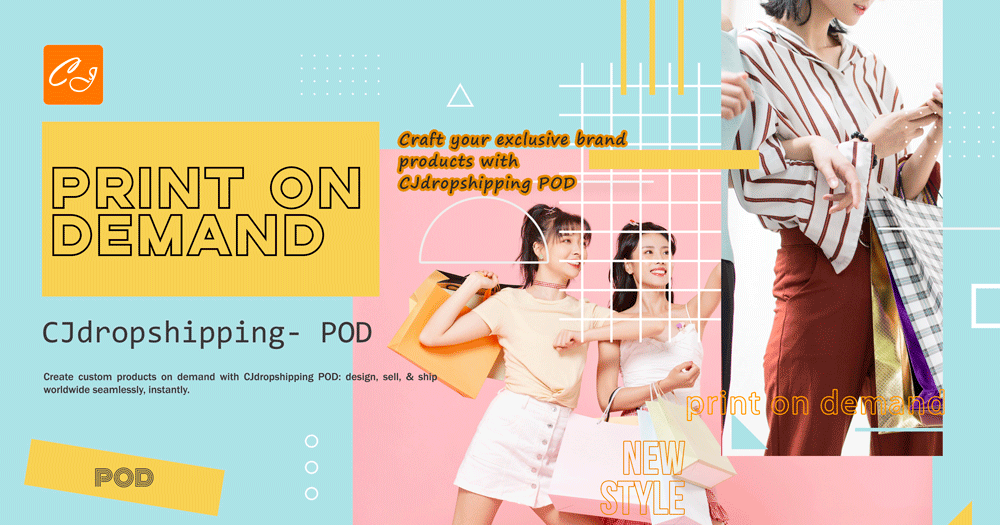
Overview: CJdropshipping is a comprehensive platform that combines traditional dropshipping and print-on-demand services. It has surged in popularity for fashion and streetwear entrepreneurs. One reason is its vast product catalog – CJ connects you to tens of thousands of products (including tons of apparel styles, accessories, shoes, and even jewelry). For POD specifically, CJ allows you to print custom designs on many streetwear staples: T-shirts, hoodies, jackets, hats, patches, etc. What sets CJdropshipping apart is its integration of sourcing and fulfillment; if they don’t have a product you want, they can often source it from a manufacturer on request.
Streetwear Advantages: CJdropshipping shines for streetwear brands in a few key areas. First, it operates multiple warehouses in the US (and in Europe, and Asia), enabling very fast shipping to your customers. If you choose products that are stocked in a US warehouse, orders can be delivered to US customers in as little as 2–7 days – that’s a huge plus, putting your shipping on par with big retailers. Fast delivery enhances customer satisfaction and gives your brand credibility. Second, CJ’s catalog includes items beyond the basics – for example, they offer different jacket styles, unique fashion pieces, and even sneakers you can customize – so you can really expand your streetwear line creatively. They also update their inventory with trending styles (e.g., if a certain style of oversized tee or techwear pants is hot, CJ might have a blank version available). Essentially, CJ is like having both a POD provider and a personal sourcing agent in one.
Integration & Use: CJdropshipping integrates with Shopify, WooCommerce, Wix, and more. The process is a bit more involved than Printful – typically you find a product on CJ’s platform, add your design, and list it to your store. But they have improved their design interface over time. Orders from your store sync to CJ automatically for fulfillment. Another big advantage: CJ is free to use (no subscription fee). You pay only the base product + shipping when an order comes in, keeping overhead low.
Branding & Customization: CJdropshipping supports private branding in ways many POD companies do not. For instance, you can request custom labels or packaging – CJ allows adding your own logo labels to clothing, inserting branded thank-you cards, and even custom outer packaging if you pay for it. This is perfect for streetwear brands aiming for a polished unboxing experience. They also offer quality checks on products and even product photography services if needed. Few POD services go this far in helping small brands look big.
Costs: CJ’s pricing is generally competitive. Because they source directly from manufacturers (often in China) and have a lot of volume, the base prices on many items are lower than, say, Printful’s. For example, a basic POD t-shirt might cost $8 on CJ vs $12 on Printful. This means you can enjoy higher margins or set lower retail prices. Shipping costs vary by method (CJ has their own shipping lines like “CJPacket” plus standard options). For fast US shipping from a US warehouse, costs are comparable to domestic shipping rates from others. One thing to be mindful of: not all items are in every warehouse. If something ships from China, it could take 1–3 weeks unless you pre-stock inventory in the US warehouse (CJ allows you to buy, say, 100 units of a product to store in their US warehouse for rolling fulfillment).
Potential Drawbacks: The very flexibility that makes CJ powerful also means a bit more management on your part. You should pay attention to where each product is shipping from when you add it. If you mistakenly list a hoodie that’s only in the China warehouse, your US customers might face longer delivery times (though CJ does offer reasonably fast ePacket and similar shipping options). Also, while CJ’s print quality is generally good, it’s wise to sample because their network can involve different print partners. Customer support is available 24/7 via chat; CJ is known to be quite responsive, but occasionally the language barrier or time zone differences (with their main team in China) can cause minor hiccups. Lastly, because so many dropshippers use CJ, some of their product selection (for non-printed items especially) is not exclusive – meaning other sellers might offer similar items. However, with your original designs on POD products, this is less of an issue; your designs make the products unique.
Why Choose CJdropshipping: If you want one partner that can do it all, CJdropshipping is a top choice. It’s particularly strong if you plan to scale – you can start with POD, then perhaps also offer some non-POD accessories (e.g., a certain sneaker or backpack) through the same system. Many clothing brand owners use CJ as a one-stop solution for broad variety and logistical muscle. The combination of fast shipping (with US/EU warehouses) and custom branding options gives it an edge. One review aptly called CJ “a one-stop solution for clothing dropshippers who want broad product variety and faster U.S. shipping without managing inventory.” If your goal is to run a full-featured streetwear store without worrying about fulfillment, CJdropshipping deserves serious consideration.
2. Printful – Best Quality and Reliability
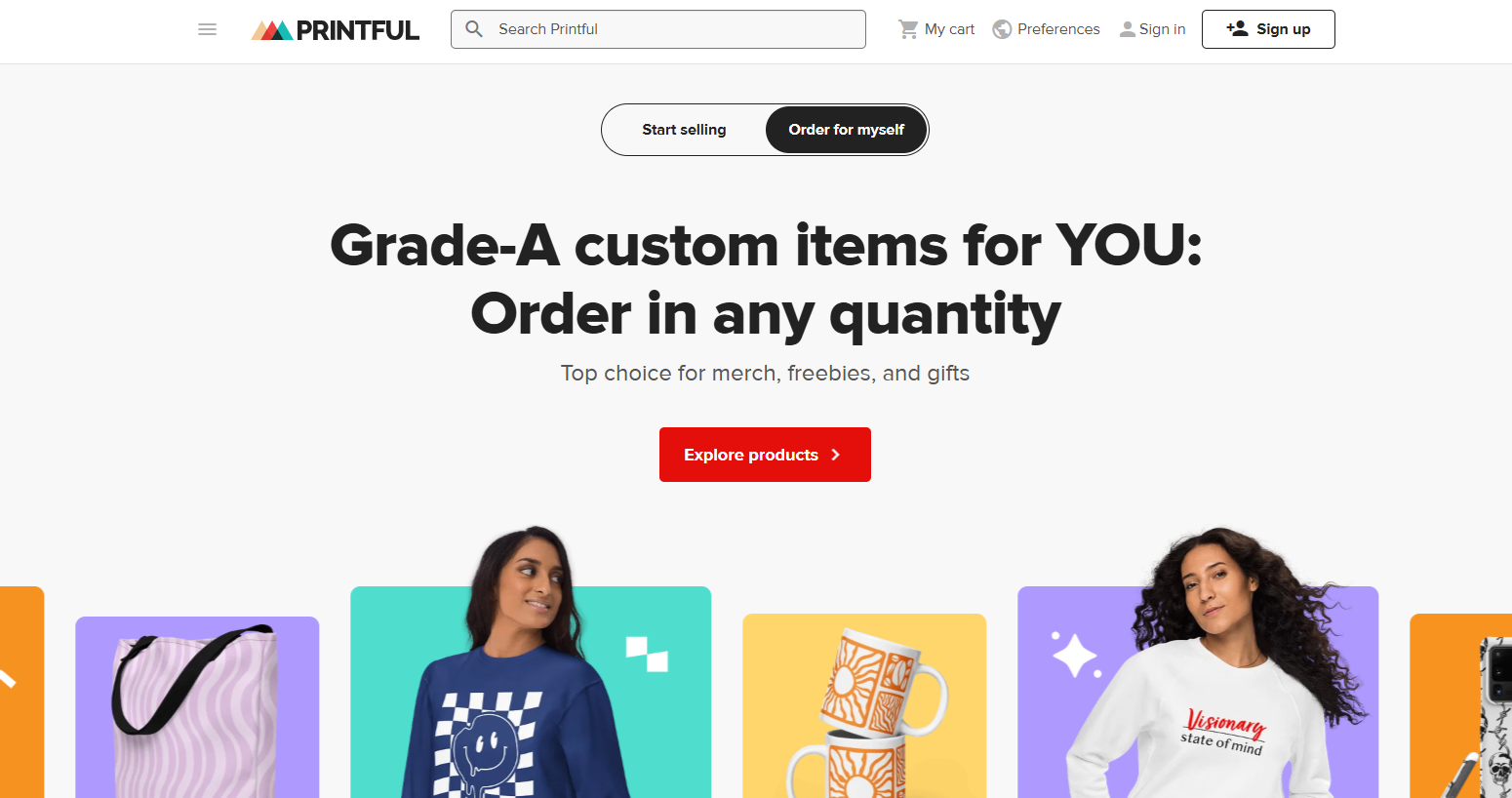
Overview: Printful is often the first name that comes up for print-on-demand, and for good reason. They are a large, well-established POD provider with a reputation for high print quality, robust tech integration, and worldwide fulfillment centers. Printful has been catering to apparel brands since 2013 and by 2025 offers over 400 products. For a streetwear brand, Printful covers all the basics (tees, hoodies, sweatshirts, jackets, hats, bags, etc.) as well as some unique pieces (all-over print bomber jackets, embroidered Champion brand apparel, etc.). They handle everything in-house: printing, embroidery, quality check, packing, and shipping – which ensures consistency.
Streetwear Advantages: The biggest selling point of Printful is quality and consistency. Their DTG prints are vibrant and wash durable, and their embroidery is professional grade. If your streetwear brand’s reputation relies on top-notch merch (no misprints, no off-center logos), Printful delivers that reliability – they report a 99.5% order fulfillment accuracy. They also stock premium blank garments, including popular streetwear blanks like Gildan 5000 heavy cotton tees, Bella+Canvas 3001 soft tees, and fleece from brands like Champion or Stanley/Stella for eco-friendly options. This means you can align your products with the quality levels streetwear consumers expect. Printful’s quality control is often cited in reviews as a major plus – each item is checked, and if there’s any issue, they catch it (or you can deal with returns easily).
Another advantage: multiple fulfillment centers. Printful prints your orders in a facility closest to your customer when possible. They have centers in California, North Carolina, Mexico, Latvia (EU), Spain, Canada, Japan, and more. So a customer in London might get their order from Europe, while one in LA gets it from the West Coast, minimizing shipping time. Typically, Printful can produce and deliver within about a week to many regions (production 2-5 days, then shipping a few days). They even offer some products with overnight shipping options or express. For a global streetwear brand, this coverage is fantastic.
Integration & Features: Printful integrates with 22+ platforms – Shopify, WooCommerce, BigCommerce, Etsy, Amazon, eBay, Wix, Squarespace, etc. The integration is seamless and very user-friendly. The Printful dashboard also provides a Mockup Generator so you can create professional product images (with models or flat lays) showing your designs, which is great for marketing. They also offer services like graphic design help and a logo maker if you need. Another cool feature is warehousing: if you have non-POD items (say you made some custom pins or stickers), you can actually store them at a Printful warehouse and they’ll fulfill those alongside your POD stuff.
Branding Options: Printful is pretty good on branding – not as customizable as CJ in terms of packaging, but they allow inside neck label printing (for a fee) on apparel, which means you can replace the manufacturer’s tag with your printed label (size, logo, etc.) for a fully branded look. They use tear-away label garments for that purpose. They also allow adding pack-in inserts or stickers to orders (you have to order those in bulk to their warehouse). All shipments from Printful are in plain packaging with no Printful logos; the return label can have your brand name and address. So Printful essentially acts as a white-label fulfillment arm of your brand.
Costs: Printful is known to be a bit pricier on the base cost. For example, a basic t-shirt might cost $12, a hoodie $20, plus shipping. This can make margins tighter unless you price your products at a premium (which many streetwear brands do anyway). However, what you get for that cost is high reliability and quality. Also, Printful does not charge any monthly fee – you pay per product only. They have volume discount levels (if you start doing large monthly sales, you get 5-10% off). They also have discounts on sample orders so you can test products more cheaply. Shipping costs are straightforward, often around $3.99 for a tee in the US, and they discount additional items in the same order. Because Printful has local fulfillment in many regions, customers don’t usually pay import duties (e.g., EU orders are shipped from within EU, etc.), which can be a selling point.
Potential Drawbacks: The main con is that Printful’s pricing means you need to charge a premium to maintain good margins. Many successful brands using Printful position themselves as premium streetwear to justify, say, $30–$40 for a tee that cost them ~$12 + shipping. That can work if your brand is strong, but new brands might find it hard to price high. Another drawback is that Printful’s sheer size means they don’t really do product sourcing beyond their catalog – if they don’t carry a product, you can’t request custom items (whereas with CJ you could potentially ask them to find something). Printful’s focus is also primarily on POD and not traditional dropshipping, so they don’t offer, say, non-print products except those they specifically have. Lastly, while Printful’s print quality is top-tier, there’s occasionally slightly slower fulfillment during peak seasons (holiday rush). But generally they communicate well about any delays.
Why Choose Printful: If you want peace of mind and top quality, and you’re okay with slightly lower margins or higher retail pricing, Printful is a fantastic partner. It’s especially good for those who are new to ecommerce because of how easy the tech side is – you’ll have fewer technical issues, and if a problem arises, Printful’s customer support is 24/7 and very responsive. Many streetwear brand owners use Printful to handle their core products because they trust the end result to delight customers. The consistency across thousands of orders can really help maintain your brand’s reputation. And as your volume grows, you can negotiate better pricing or explore Printful’s enterprise solutions.
In short, Printful is the premium POD option: you pay more, but you get a lot – quality, global reach, and a stress-free fulfillment process. It’s often recommended for those who prioritize brand reputation and customer satisfaction. As evidence of their reliability, on the Shopify App Store Printful has a 4.6/5 rating from over 2,200 reviews, with users specifically praising the product quality and seamless syncing. That speaks volumes about keeping both you and your customers happy.
3. Printify – Best for Variety and Flexible Pricing
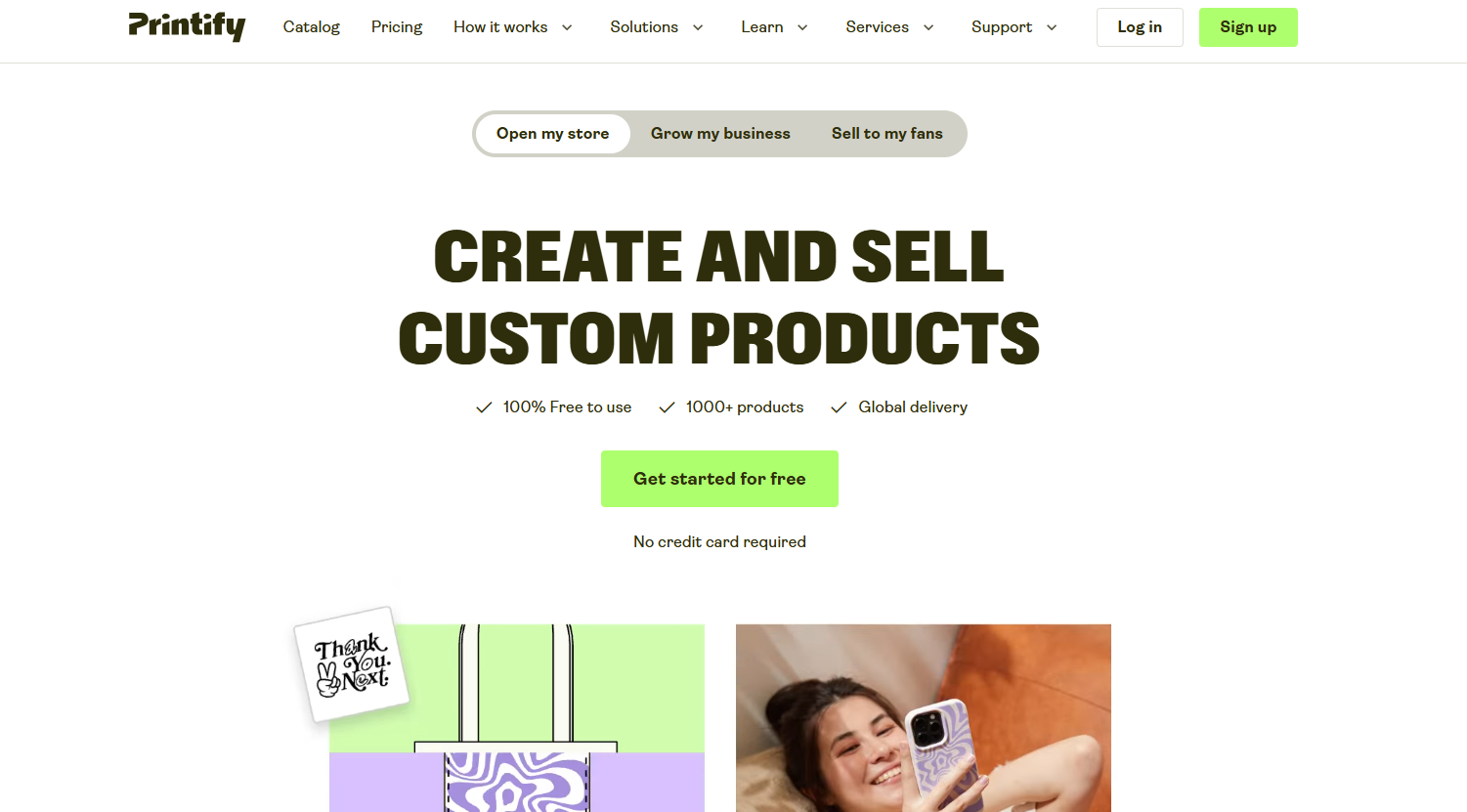
Overview: Printify is another major POD platform, but with a different model. Instead of doing printing in-house, Printify is a network of print providers around the world. When you create a product on Printify, you can choose which print partner (supplier) will fulfill it, often with multiple choices per product. This setup offers some unique benefits: unmatched product variety and competitive pricing. Printify boasts over 800+ products because they aggregate many suppliers’ catalogs. For streetwear, this means you might find specific items like a particular brand of heavy cotton tee, or sublimation cut-and-sew bomber jackets, or even things like printed shoelaces – things not every POD service has.
Streetwear Advantages: The number one reason to consider Printify is flexibility and cost. Often you can find a print provider through Printify that offers a lower base cost on an item than the equivalent on Printful. For example, a premium hoodie that’s $20 on Printful might be found for $15 on Printify via a provider in China or one in the U.S. who has lower overhead. This directly improves your profit margin. Printify even has a Premium subscription ($24.99/month) that gives you up to 20% off all base prices – for a brand doing decent sales, this can pay for itself quickly by saving on each product.
Product variety is great for differentiation. If you want to sell something like all-over-print basketball shorts, or denim jackets with DTG prints, or unique dye patterns – chances are Printify has a provider for it. Many streetwear brands leverage Printify to offer more eclectic products (like Printify has some high-top canvas sneakers and boots you can print on, which can be a cool addition to a streetwear catalog). They also allow multiple print types: DTG, sublimation, embroidery (with some providers), even DTF in some cases. Essentially, Printify is like a marketplace connecting you to print factories from the US, UK, Germany, China, Australia, etc., and you pick what suits your needs.
Choosing Print Providers: The flip side of this flexibility is that quality and speed can vary by provider. Printify does vet providers and provides ratings and user reviews for each, which you should study. For instance, one provider might have a 97% print quality score and 98% on-time shipping, while another is 89% with occasional delays. As a streetwear brand, you’d likely stick to the top-rated providers only. Printify’s interface makes it easy to compare. You can also route orders to different providers by region – e.g., use a U.S. printer for U.S. orders and a UK printer for European orders – to reduce shipping times (this manual setup, but they support multiple “variants” by print provider). That’s a strong feature if you manage it well.
Integration: Printify integrates with Shopify, WooCommerce, Etsy, and more (most major platforms). Integration is smooth; it’s similar to Printful in terms of pushing products and auto-fulfilling orders. One difference: when an order comes in, Printify charges you and then forwards the order to the print provider you selected. If that provider has an issue (out of stock blank, etc.), Printify might notify you to switch to another. Those scenarios are not common but can happen. Overall, though, many merchants run successful stores on Printify with minimal issues.
Speed: Since different providers fulfill, shipping times depend on who you choose. If you pick a local provider for your market, it can be as good as Printful’s times. If you opt for a cheaper overseas provider to save cost, you might face longer shipping for those orders. Printify allows you to filter providers by region when creating products. For streetwear, one strategy is to use at least one provider per major region (e.g., one in North America, one in Europe) – the system can automatically send orders to the correct one based on country if you set “multiple print provider” mode for that product. It requires some setup but then works seamlessly.
Quality: You should definitely sample from any provider you plan to use. The quality can range from excellent (some providers essentially match Printful’s quality) to mediocre (maybe duller prints or less consistent). However, Printify’s top providers are generally very good and some are even the same companies that Printful or others use. In fact, Printify sometimes lists Printful’s own facilities as fulfillment options for certain products (though at slightly different pricing). So you could, for example, have an item printed by “Printful (through Printify)” if you wanted – illustrating that Printify can harness multiple networks. Just know that managing quality is on you: stick to high-rated providers and perhaps avoid switching providers frequently once your store is live (unless needed) to maintain consistency.
Cost Consideration: Printify’s base prices with Premium are among the lowest. This is a big pro for profitability. It’s not rare for Printify sellers to hit the 40-50% margin range easily because of these lower costs. Just remember to factor Printify’s subscription if you use it and shipping fees. Another subtle cost advantage: if one provider raises prices or has stock issues, you can swap to another without changing your whole business, which can protect your margins long-term.
Why Choose Printify: Printify is ideal if variety and cost are your priorities, and if you don’t mind a little extra legwork in choosing and managing print providers. It’s like a buffet of printing options – you can pick what suits your brand best. Many streetwear dropshippers use Printify to source products that are not available elsewhere, giving them an edge with unique merchandise. It’s also great for scaling globally at low cost, since you can utilize local production in multiple countries. The trade-off is you have to maintain quality control and possibly interact with multiple production partners via one platform.
If you’re a savvy entrepreneur who likes having control and options, Printify will feel empowering. On the other hand, if you prefer a set-it-and-forget-it single partner approach, you might lean more to Printful or others. Think of Printify as the “marketplace” approach to POD – it can yield fantastic results and savings if managed well. For many in the streetwear community, the ability to source, say, that heavyweight streetwear tee with the tight collar from a specific provider (one Reddit user noted providers like **Monster Digital or Dream Junction on Printify for high-quality prints and apparel) is a big win.
Overall, Printify is a top-tier choice, especially once you identify the best providers on it. It gives you a level of supply chain flexibility that can be very entrepreneurial – you’re not tied to one company’s inventory or pricing. And in the fast-moving streetwear world, that flexibility to adapt (in both offerings and cost structure) can be a significant advantage.
4. Apliiq – Best for Private Label and Brand Customization
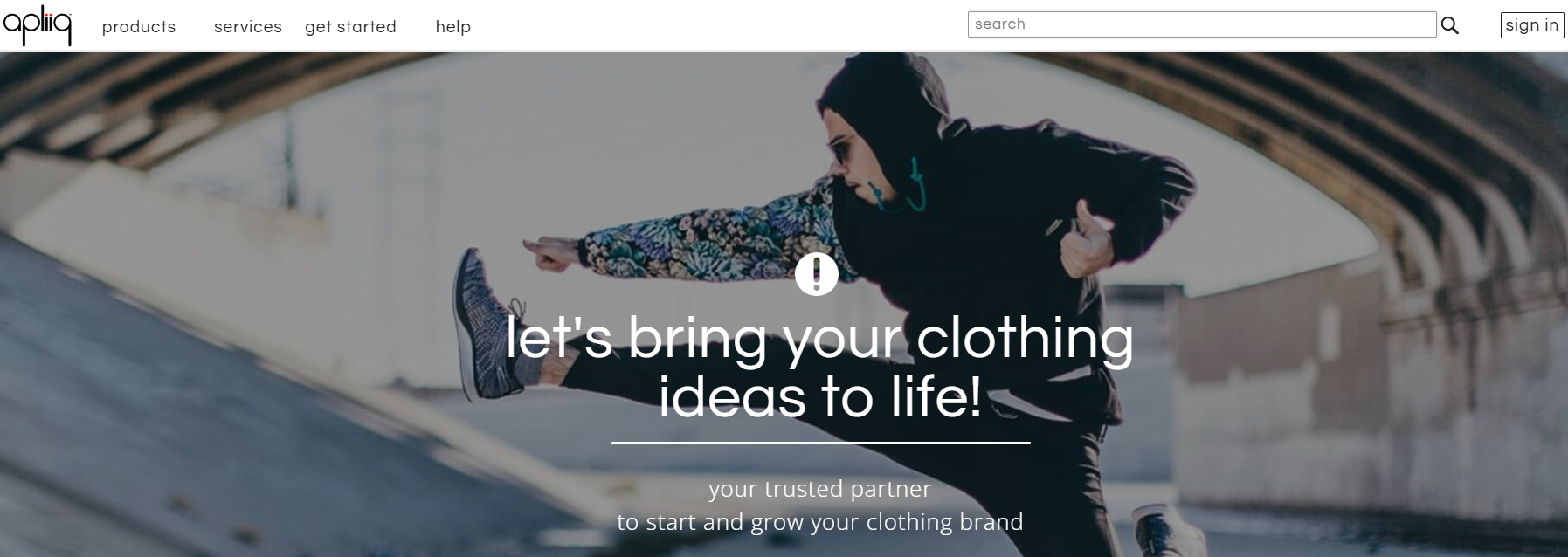
Overview: Apliiq is a POD company specifically geared towards fashion and streetwear brands that want to build their own clothing line with a strong brand identity. Unlike generic POD services, Apliiq focuses on cut-and-sew apparel and offers extensive branding services like sewing in custom labels, patches, and even custom garment creation for larger orders. They’re based in Los Angeles, which is fitting given LA’s streetwear scene, and they pride themselves on “print on demand, private label.”
Streetwear Advantages: The biggest draw of Apliiq is that it allows a small brand to achieve a very professional, retail-quality finish on their products. If you want your shirts and hoodies to have your own woven label in the neck, or a branded hem tag, or inside printing, Apliiq can do that. For example, they offer a subscription plan where they’ll create and sew in your custom labels onto each product – essentially transforming blank wholesale garments into your brand’s clothing. This is something usually only larger brands could afford through traditional manufacturing. With Apliiq’s POD model, you can do it on demand (they hold a stock of your labels and add them as orders come in). It’s an incredible feature for brand-building: your customers won’t see a Gildan or Bella+Canvas tag, they’ll see your brand name. This greatly elevates perceived value and is important for many serious streetwear labels.
Apliiq also offers a range of high-quality blank apparel. They carry popular streetwear blanks like Independent Trading Co. hoodies, Champion garments, and premium streetwear tees like the 1301 “Classic Streetwear T-Shirt” (which is a favorite heavy tee). So you can choose blanks known to fit and feel like true streetwear pieces. They even have options for cut-and-sew (like all-over prints or custom bomber jackets) if you reach certain volumes.
Printing & Embroidery: Apliiq does screen printing, DTG, and embroidery. In fact, if you have volume, they might even screen print your design which yields that nice soft feel and solid colors that streetwear aficionados love. For one-off, they’ll do DTG, but their DTG quality is reported as good. They also do tackle twill and other specialty customizations for things like varsity jackets if that’s your style. Basically, Apliiq is run by people who understand apparel production deeply, so they can advise and handle more complex requests than a standard POD.
Integration: Apliiq integrates with Shopify and WooCommerce primarily. The integration is straightforward: you design products on Apliiq (using their online workshop where you can apply prints/graphics to garments and specify labels), then push them to your store. Orders sync and Apliiq fulfills. Because they do more handwork (like sewing labels), fulfillment might not be as lightning fast as automated POD – typically, orders take several days to produce, especially if custom labels are involved (they have to be sewn in each time). But the end result is unique.
Costs: All these premium services do come at a cost. Apliiq’s base prices are higher than Printful or Printify for comparable items, and adding custom labels costs extra (for example, a woven label might cost $1–$3 per item plus an initial setup fee for your labels). They have a few plans: a free level (pay per product), or a Pro plan (around $100/year) which unlocks better pricing and the ability to use certain custom branding features. Essentially, you pay to play in order to get that true private label experience. However, if your brand can command higher prices (which true streetwear often does through hype or quality perception), then Apliiq’s offerings can justify a $60 hoodie price tag, for instance.
Why Choose Apliiq: Choose Apliiq if branding is at the core of your strategy and you want your products to look indistinguishable from those of established streetwear labels. It’s for brand owners who say: “It’s not enough to print a cool design; I want my logo on the neck tag, a custom patch sewn on the sleeve, and a line of cut-and-sew products eventually.” Apliiq is essentially your partner in building a fashion line, not just a print shop. The trade-offs are higher cost and a smaller integration ecosystem (Shopify/Woo only), but the payoff is a product that truly feels custom-made. Some streetwear entrepreneurs use Apliiq for their main line to get the branded feel, and maybe supplement with Printful or others for simpler products or accessories.
In 2025, customers appreciate authenticity and details – a sewn label or high-quality fabric can set your merchandise apart from the avalanche of basic printed Gildan tees out there. Apliiq allows you to compete on that level from the start. They often emphasize that they’re “Your trusted partner to start and grow your clothing brand”, reflecting how they’re more niche to fashion-forward sellers. If that resonates with you, Apliiq is likely the best choice despite the higher base cost.
5. Gelato – Best for International POD Network
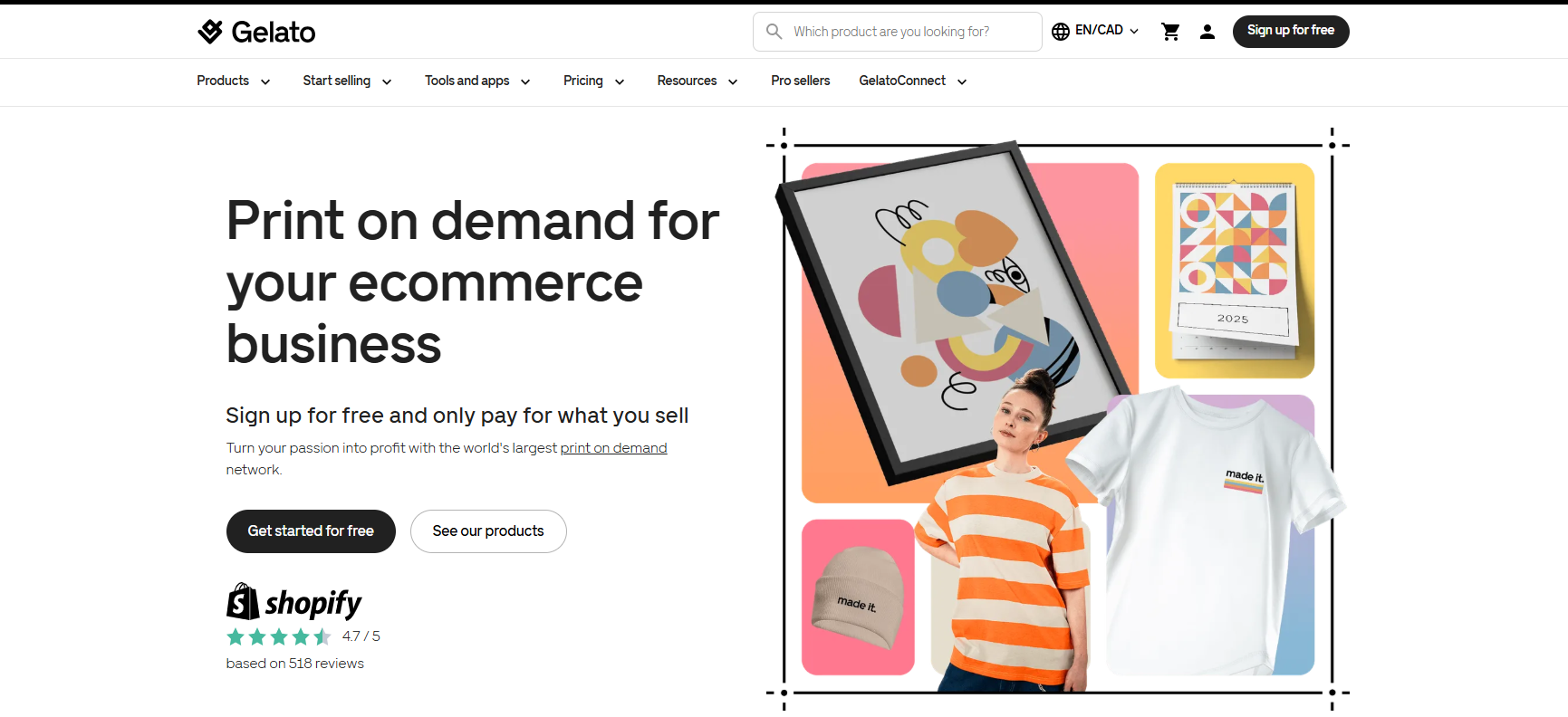
Overview: Gelato is a slightly newer POD platform (originating from Norway) that has grown a global network of print providers. The idea of Gelato is to route orders to a printer as close as possible to the end customer. It’s similar to Printify’s network model, but Gelato automates the selection for you. They have 100+ print partners in 33 countries. For streetwear, Gelato covers the basics: a range of T-shirts (including popular brands like Stanley/Stella for eco shirts), hoodies, sweatshirts, plus some accessories like posters, phone cases, etc.
Streetwear Advantages: Gelato’s strength lies in serving international customer bases efficiently. If you expect your online store to get orders not just domestically but also from Europe, Asia, etc., Gelato might ensure each order is printed locally in, say, Germany or Australia, reducing shipping time and cost. This helps provide a uniform experience worldwide and can also reduce the carbon footprint, which you can even promote if sustainability is part of your brand ethos.
The print quality with Gelato’s network is generally good – they partner with reputable print shops in each region (often ones that also serve corporate clients). Their product catalog may not be as extensive as Printify or Printful, but they focus on quality basics. One notable thing: they have a good selection of premium and eco-friendly garments. For example, they offer organic cotton tees and hoodies which align with modern streetwear’s move towards sustainability.
Integration: Gelato integrates with Shopify, WooCommerce, Etsy and a few others. Setting up products is easy enough, and they have a design editor. One cool feature is multi-language and multi-currency support – if you want to run storefronts or serve customers in different locales, Gelato can automatically produce region-specific content (they also have an API if you’re techy).
Costs: Gelato’s prices are moderate, and they have subscription tiers (Gelato+ plan) which give slight discounts and some premium features (like custom branding options, order routing preferences, etc.). Base prices might be a bit higher than Printify’s cheapest, but with the advantage of local printing (so you often save on international shipping). For a U.S. customer, a shirt might be printed by a U.S. partner; for a French customer, by a French partner – each with their own base cost and local shipping. Gelato’s system handles currency and VAT, etc., which is great if you don’t want to fuss with international taxes compliance.
Branding: As of 2025, Gelato has been improving branding options – they introduced the ability to add your logo on packing slips and such. They may not yet have as deep branding options as Printful or Apliiq in terms of inside labels or custom packaging (those features might still be limited or in development), but they do understand the importance of it. It’s worth checking their latest offerings if branding is a must-have.
Why Choose Gelato: If your streetwear brand expects a widely distributed customer base, Gelato can make their experience consistent. For example, your fan in Tokyo gets their shirt in a few days just like your fan in New York, without exorbitant shipping fees. This can help you grow internationally without setting up separate solutions for each region. Additionally, if eco-consciousness is part of your brand, Gelato’s local production and their eco product line can reinforce that narrative (produce closer to consumer = less shipping emissions).
It’s also a fairly hands-off solution – you don’t manually pick providers like with Printify. Gelato will ensure an order is routed to an optimal printer. For entrepreneurs who like automation and global reach, it’s a strong option. The potential downside is slightly less control over the specific print partner, and the product range focusing on core items rather than niche ones. But for 90% of streetwear brands that primarily sell t-shirts, hoodies, etc., that’s not an issue.
Many users praise Gelato for its easy expansion to new countries – you can run marketing in a new region and not worry that shipping will kill your conversion, since Gelato’s already set up there. Also, customer support from Gelato gets good marks, which is crucial when dealing with multiple countries’ orders.
In summary, Gelato is like a globalized Printful/Printify hybrid – maybe not the flashiest with niche products, but very efficient and reliable for worldwide fulfillment. If you see your brand as a global player or you’re based outside the typical US/EU centers, Gelato could be your best friend in ensuring everyone can wear your designs without long waits.
Comparison Wrap-Up: Each of these suppliers – CJdropshipping, Printful, Printify, Apliiq, Gelato (and there are others like SPOD, Gooten, etc.) – has its own strengths. You might even use a combination: for instance, CJdropshipping for fast-shipped items and unique products, Printful for a particular item you trust them on (like high-detail DTG prints), and Apliiq for your premium limited collection with sewn labels. There’s no one-size-fits-all; it depends on your brand’s focus. However, given the objective to highlight CJdropshipping’s advantages, it’s clear that if broad product range, cost-effective sourcing, and speed (especially to US customers) are top priorities, CJdropshipping stands out as a powerhouse. Their ability to combine POD with dropshipping inventory and custom branding is quite unparalleled. Many savvy sellers might start with Printful or Printify for simplicity, but move to CJ as they scale and want more control over sourcing and branding.
Ultimately, the best supplier for you is the one that aligns with your business model and brand values. Consider doing small test orders from a couple of these to see first-hand the quality and process. Whichever route you choose, it’s incredible that in 2025 we have such robust options – allowing even a solo designer to launch a full-fledged streetwear line with global fulfillment from their bedroom. Use that to your advantage by picking the partner(s) that empower your vision the most.
Printing Methods in Print on Demand: DTG, DTF, Screen Print & More
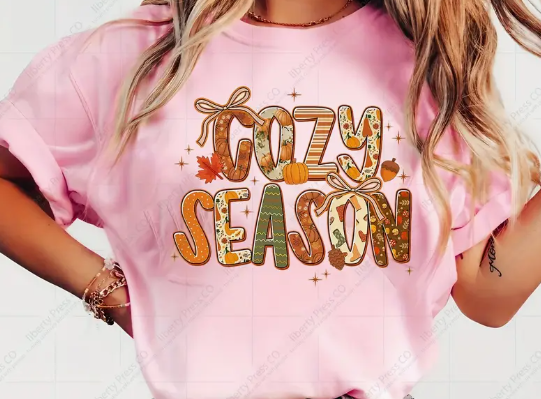
Printing is at the heart of print-on-demand. As a streetwear brand, understanding different printing methods will help you choose the right technique for your designs and ensure your products look and feel high-quality. The main methods you’ll encounter are DTG (Direct-to-Garment), DTF (Direct-to-Film), Screen Printing, and a few others like sublimation and embroidery. Here’s a breakdown of each, with their pros and cons, especially in a POD context:
Direct-to-Garment (DTG) Printing: DTG is the workhorse of POD apparel. It’s essentially an inkjet printer for clothes – the garment (usually cotton-based) is pre-treated and then the printer sprays inks directly into the fabric in the pattern of your design. DTG is digital, meaning it can print millions of colors, fine gradients, detailed images (even photos), without needing any physical screens or setups for each design. This makes it ideal for one-off prints and complex artwork. The result of DTG is a print that is relatively soft to the touch (the ink soaks into the fibers a bit) and quite durable through washes. DTG works best on 100% cotton or high-cotton blends; it also prints vibrant on lighter colored garments and uses a white ink underbase when printing on dark shirts to make colors pop.
For your streetwear brand, DTG is what allows you to offer a tee with a full-color graffiti piece or an intricate illustration cheaply on-demand. There’s virtually no setup cost – you could print a single shirt profitably. The detail level is fantastic; tiny line art or gradients are no problem. However, DTG has a couple limitations: on certain fabrics like 100% polyester or very stretchy materials, DTG isn’t optimal (ink might not bind as well). Also, while colors are generally great, extremely vibrant neon-type colors or ultra-saturated tones sometimes appear slightly less vibrant compared to screen printing or DTF. DTG prints also have a slight faded look on very dark garments if not done perfectly, due to ink soaking in (pretreatment and multiple passes usually mitigate this). Still, modern DTG machines (like Kornit or Brother GTX printers that many POD companies use) produce fantastic results that satisfy most customers. They can handle photorealistic designs and lots of colors with ease, which is a big advantage over screen printing if your designs are complex.
Direct-to-Film (DTF) Printing: DTF is a newer technology gaining popularity in the last couple of years, including in some POD circles. The process is different: instead of printing ink directly on the shirt, you print your design onto a special film, coat it with adhesive powder, cure it, and then heat-press that film onto the garment. It’s like making a custom transfer for each design. The result is a thin layer that sits on the fabric (somewhat like a screen print or a vinyl might). DTF has some unique advantages: it works on a wide variety of materials (cotton, polyester, blends – more versatile than DTG) and the colors often come out extremely vibrant and opaque. For example, DTF always lays down a white layer under the whole design, not just on dark shirts, which can make colors really “pop” against any background. DTF prints tend to maintain full brightness and have excellent color saturation, sometimes even more eye-catching than DTG.
For streetwear, this means if you have a design with vivid colors or you want to print on less traditional fabrics (like nylon windbreakers or polyester jerseys), DTF can handle that. It’s also good for printing small details sharply, and it’s durable in terms of not washing out. The feel: DTF prints do add a slight “film” feel on top of the fabric, kind of like a very thin sticker. For small logos or thin graphics, you won’t notice it much, but for a large solid graphic area, a DTF print can feel a bit plasticky or rubbery to the touch. It’s not thick – thinner than old-school iron-ons – but DTG in comparison has virtually no hand-feel except where heavy ink builds up. Some customers might not mind or even notice, especially if they’re used to screen prints which also sit on top of fabric, but it’s a consideration. DTF shines for its versatility and vibrancy. Some POD suppliers are starting to use DTF for certain products because it’s efficient and can be more forgiving (no pretreat needed, etc.). One could say DTF offers a bit more color “pop” and fabric flexibility, while DTG offers a softer feel on cotton. Depending on your designs and garment types, you might prefer one or the other. For example, if you print a multicolor design on a cotton hoodie, DTG will look great; if you print on a nylon coach jacket, DTF might be the way to go.
Screen Printing: The OG of t-shirt printing. Screen printing involves creating stencils (screens) for each color in your design and pushing ink through the mesh onto the shirt. It’s a bit of an involved setup process, which is why it’s typically not used for one-off POD orders (setup is only cost-effective when printing in bulk). However, for streetwear brands, screen printing is gold standard for large runs: it yields very bold, vibrant prints with excellent durability. In screen printing, the inks are thicker and more saturated than DTG – this gives prints that eye-popping color vibrancy and slightly raised, textured feel that many associate with high-quality merch. Screen prints also excel with solid graphics and spot colors: for example, a big bold logo in red and white will look extremely crisp and opaque via screen print. The catch is, each color requires a separate screen, so designs with lots of colors become labor-intensive (and expensive). Most traditional screen printers might cap at, say, 6-8 colors max for t-shirts, whereas DTG could do unlimited.
In the POD context, you usually won’t get true screen printing unless you place a bulk order (some POD companies have a threshold where if you get 50+ orders of the same design, they might screen print them to save cost). But it’s good to know about because as your brand grows, you might decide to do a bulk production run of a best-selling design to stock or for an event drop – and that’s when you’d use screen printing by contracting a print shop or through your POD’s bulk service. Quality-wise, screen printing is very durable (the design sits on top of fabric in a thick layer; it can last many washes, though eventually it might crack or fade slightly after a lot of wear, which for some is even a desired vintage look). The prints have a certain vibrancy and solid finish that’s hard to match. For example, pure black ink on a white tee via screen print is super solid and true; via DTG it might be very slightly less deep because DTG layers are thinner. Screen printing also handles specialty inks (like puff ink, metallics, glow-in-dark, etc.) which can be a fun element in streetwear design.
To sum up screen printing: best for bulk, limited colors, and ultimate color pop on simple graphics. It’s not cost-effective for one-offs, so your POD provider won’t use it on-demand. But it’s worth understanding for the day you perhaps grow into hybrid fulfillment (POD + some inventory).
(As a side note: Some POD companies have started using “hybrid” methods like screen printed transfers – essentially screen printing the design onto transfer sheets and then heat pressing to order. This gives a real screen print feel on-demand. It’s not common but might grow. Also, plastisol heat transfers are similar – they can be made in bulk and applied as needed.)
Sublimation Printing: Sublimation is a method primarily for all-over designs and polyester materials. It involves printing the design with special sublimation ink onto paper, then using heat to transfer the ink into the fabric fibers (if polyester) or onto coated items. In apparel, sublimation is used for things like all-over print shirts, bomber jackets, or cut-and-sew panels. The result is a print that has no feel at all (it’s completely in the fabric) and can cover the entire garment edge-to-edge. The limitation is it only works on light-colored polyester (or poly blends) – you can’t sublimate on 100% cotton or on dark garments (the inks are translucent, so they need a white or light background). In streetwear POD, sublimation is how you get those crazy full-print galaxy hoodies or patterned tees, often printed on white fabric and then sewn, or on pre-made white blanks. For example, many POD suppliers offer an “all-over print T-shirt” where they sublimate your design onto a pre-sewn white polyester tee (some small white gaps might occur at seams, known as print artifacts). If your brand style includes full coverage patterns or loud designs covering the whole shirt, sublimation is the way. Keep in mind polyester has a different feel – smooth and a bit synthetic – which can be great for athletic-style streetwear or jackets.
Embroidery: While not printing per se, embroidery is another decoration method offered by POD services (for hats, beanies, patches, and even left-chest logos on shirts/hoodies). Embroidery uses threads to stitch your design. It’s perfect for simple logos or text-based designs, especially small ones. In streetwear, a classic embroidered logo on a dad cap or a beanie is a high-quality touch. POD providers often let you upload a design and they’ll digitize it for embroidery. There are limitations: highly detailed or shaded designs won’t translate well, and there’s usually a thread color limit (maybe up to 6-8 colors). But embroidery gives that 3D, tactile look and a premium vibe. It’s also super durable – it won’t fade or peel (though threads can eventually fray if abused). For your brand, consider embroidery for items where it makes sense: a small brand logo, a simple icon, or even script text. Some hoodies can also have embroidered elements (like a small chest logo while a big design is printed on the back – mixing methods).
Other Niche Methods: Occasionally you might see heat transfer vinyl (HTV) or cut vinyl for jerseys (names/numbers) – not typical for POD except in special cases (some POD do offer custom names on jerseys which uses vinyl lettering). There are also laser engraving or UV printing for accessories (like dog tags or metal card holders), but those are beyond apparel. For completeness, there are also Hybrid DTG-Screen systems (like screen pre-printing a white underbase and DTG on top for efficiency) – these are behind the scenes tech that some print shops use to get the best of both worlds.
Now, given all these, how do you choose what’s best for your designs?
-
If you have a detailed, multicolor artwork to print on standard tees or hoodies: DTG is your go-to in POD. It will capture the detail and color range. Ensure your file is high resolution and has colors adjusted for printing (POD companies usually handle color profiles, but note that what you see on screen vs on fabric can differ slightly).
-
If you have a design with extremely vibrant colors or want to print on non-cotton fabrics: DTF might be used by your supplier. You might not always have a choice in POD (they won’t always tell you if it’s DTG or DTF), but some are switching to DTF for certain garments because of versatility. The main thing to know is your customer might feel a bit of a print film – for streetwear like windbreakers or tote bags, that’s quite acceptable; on soft tees, some people might notice. However, DTF’s durability and color are big pluses – these prints can handle lots of stretching and washing without cracking (if done right, they rival screen print durability).
-
If you plan a big drop with a simpler design (like a 1-2 color logo tee) and expect to sell in bulk or want that classic streetwear merch feel: down the line consider a screen print run. Many brands do this for their staples or event releases because it lowers cost per unit significantly at scale and gives that authentic merch vibe (think of your favorite band tee or skate brand – likely screen printed). You could coordinate with a local print shop or see if your POD supplier offers a bulk discount printing option with screen.
-
For all-over designs (like a patterned shirt or a jersey): go with sublimation or cut-and-sew options. Many POD platforms have special products labeled “all-over print.” Use those templates (they’ll usually give a file guideline that covers every inch) to create the design. These are great for statement pieces like a full tapestry of your art on a shirt. Just remember, all-over prints will be on polyester – so advertise it as such (customers don’t mind if they know; in fact many streetwear jerseys are poly by nature).
-
Embroidery is best for smaller, cleaner designs. Use it to complement your printed lineup. An embroidered hoodie with a small logo can command a premium. Just design within the limitations (no tiny letters below ~0.25” tall, no gradients – everything must be solid shapes).
Pricing Strategy for Streetwear Print on Demand Clothing
Pricing your products correctly is crucial for running a profitable streetwear brand. You want to cover costs, generate profit, and still remain attractive to your target customers. With print-on-demand, the cost per item is higher than if you mass-produced clothing, so a thoughtful pricing strategy is needed to strike that balance between competitive pricing and healthy margins. Let’s break down how to approach pricing in a POD model:
1. Calculate All Your Costs: Start by understanding exactly what each product costs you. This includes:
-
The base cost from your POD supplier (e.g., $12 for a printed t-shirt, $25 for a hoodie, etc.),
-
Shipping costs that you pay to the supplier to deliver it to the customer,
-
Any platform fees (for instance, if you sell on Etsy there’s a fee, or transaction fees on Shopify payments, etc.),
-
Taxes if applicable (sales tax or VAT that isn’t passed to the customer might come out of your revenue in some cases),
-
Design costs – if you paid a designer or spent significant time yourself, you might amortize that cost,
-
Marketing costs per product sold (if you run ads, how much ad spend on average leads to one sale?).
Summing these up gives you the total cost per unit. For example, let’s say: POD base cost $12 + shipping $4 + transaction fees $1 + an estimated $2 per shirt in ad spend = $19 cost. This is important because your price must be above this to profit.
2. Set a Profit Margin Target: A common guideline in retail is a 40-50% gross profit margin for apparel. That means if it costs you $20, you’d want to sell it for around $40. For many print-on-demand businesses, a 40% margin is considered healthy. At minimum, you should aim for at least 30% to have room for discounts, errors, etc., but 40-50% gives you more cushion to reinvest in marketing and growth. Streetwear, especially if perceived as a premium or niche brand, can often command even higher margins (some luxury streetwear brands have margins above 60-70% because of brand value).
In our example, if cost is $19, a 50% margin would mean a price around $38. Many would round to $39.99. If aiming for 40% margin, price around $32-35. Check if that aligns with market expectations (more on that below).
It’s noteworthy that different products might have slightly different margin potential. Hoodies, being higher priced items, sometimes can have slightly lower percentage margin but still give you a good absolute dollar profit (e.g., costs $25, sell for $60 = ~$35 profit, which is a 58% margin – great). Accessories like stickers or small items might have lower margins or be used as freebies. But overall, 40%+ on apparel is a good benchmark.
3. Know the Streetwear Market Price Range: Do some homework on what similar brands or products charge. Streetwear is a broad field – a mass-market graphic tee might be $20, while a limited-run brand tee could be $50+. Consider where you position yourself. If your brand is catering to hypebeasts and focusing on limited editions, you can likely price on the higher end. If it’s more of an entry-level street style brand, you might go mid-range.
For example, a high-end streetwear brand (think along the lines of Supreme, Off-White level perception) can charge $80-100 for a hoodie easily. A newer indie brand might charge $45-60 for a hoodie. A POD tee usually ends up priced between $25 and $40 in the current market for independent brands. Under $25 and you might be undervaluing (or have slim profit), above $40 for a t-shirt and you better have strong brand clout or a very unique product to justify it.
Look at brands that align with your aesthetic and target audience. If most of them sell tees at $35, that’s a clue on consumer expectation. Don’t price way out of the norm unless you have a clear value reason, and don’t price so low that people assume it’s cheap quality.
4. Use Psychological Pricing: Little pricing tricks can affect sales. For instance, $39.99 feels more attractive than $40. And $35 feels significantly cheaper than $40, even though it’s not far. Many streetwear brands use round numbers for a clean look (like $30, $50), but plenty also use .99 or .00 pricing. Choose what fits your brand vibe. If you’re going for a premium feel, you might avoid odd cents (e.g., just $60, not $59.99). If going for a retail competitive vibe, .99 is fine.
Also consider offering free shipping above a certain cart value and bake that into product prices. Customers love “free shipping” – psychologically it’s a big incentive. In fact, about 90% of consumers are more likely to purchase when free shipping is offered. One strategy: slightly raise product prices to cover shipping and then offer free shipping sitewide or for orders over, say, $50. People will choose to add another item to hit free shipping, which can boost your average order value.
5. Bundles and Upsells: Think about bundles, like a “T-shirt + hoodie combo deal” or “buy 2 tees get 10% off”. This can encourage higher volume per order. It’s also a way to give customers a perceived discount without slashing your single item pricing too much. For instance, one tee is $35, but two for $60 (effectively $30 each). That way your die-hard fans who want multiple items feel they got a deal, while you still maintain margin and move more units. Be cautious with discounts though; you don’t want to train your audience to only buy when on sale, which can hurt long-term brand value (common in streetwear is actually to rarely discount – instead, create urgency with limited stock).
6. Adjust for Different Items: Hoodies usually are priced higher than tees (common ratio: if tee is $30, hoodie might be $55-$60). Hats might be around $25-35 depending on embroidery and brand. Accessories like stickers could be $5-$10 or given free as promo. Limited edition or collab pieces could be priced a bit above your usual range because of perceived collectible value. Don’t be afraid to charge premium for something truly special or limited; streetwear customers often pay extra for exclusivity.
7. Factor in Perceived Value: Beyond the raw costs, perceived value is what a customer believes the product is worth. This comes from your brand’s presentation, quality, and story. If you’re using POD but you’ve emphasized quality blanks, ethical production, or have a strong brand culture, you can often price higher because customers see more value. Great product photography, for example, can make an item look higher-end and justify a higher price. Including extras like a nice packaging experience (if you handle any custom packaging or inserts) also adds to perceived value.
For instance, a plain black tee with a small logo – if it’s from a generic unknown brand, maybe $20; but if it’s from a buzzworthy brand with a cool message and lifestyle, $35 is expected. Brand mystique and desirability allow you to price not just based on cost-plus, but on what people are willing to pay. That said, as a new brand, you might start a tad lower to entice first customers, then raise prices as your brand equity grows.
8. Leave Room for Promotions: Plan your pricing such that you can afford occasional promotions (like Black Friday 20% off) and still be profitable. If your margin is razor-thin, a sale could actually lose you money, which is not sustainable. A healthy margin gives you the flexibility to do sales or provide influencer discount codes, etc., as marketing tactics. Many businesses aim to price so that even with a 20% off sale, they still make a decent profit. This might mean your regular price is a bit higher than the absolute minimum you’d take.
9. Test and Iterate: Don’t be afraid to adjust pricing after launch. You can do A/B tests (on your site, maybe try different prices over time or for different segments). If items are flying off the shelf immediately, it could indicate you underpriced (or you just have hot demand, which is good). If no one is buying at all, perhaps price is a barrier (or the product/marketing needs work). Listen to any feedback. Some customers might say “Love the design, bit pricey though” – if you hear that often, consider if slightly lower price would increase volume enough to be worth it. Conversely, if you’re selling out too fast (a nice problem), you might even increase prices on the next drop to capture more profit.
10. Offer Multiple Price Points: Within your collection, have a range. For example, have some entry-level items (stickers, caps, basic tees) that are more affordable to attract new customers. And also have premium items (hoodies, jackets) that have higher price points for your true fans and to anchor your brand as higher-end. This way, there’s something for college kids on a budget and something for collectors willing to splurge. An “anchor” high price can also make mid-range prices seem more reasonable by comparison (classic pricing psychology: a $90 hoodie makes a $35 tee seem totally fine, whereas if you only had $35 tees and $20 tees, $35 might seem high).
Example Pricing Scenario: Let’s illustrate with a hypothetical. You have a POD cost of $15 on a tee (premium blank, printed front and back). You calculate shipping and fees might be $5, so $20 total cost. You decide on a 50% margin, target ~$40 retail. You check competitors: similar indie streetwear brands sell tees $34-38. You decide $37.00 (maybe you like round numbers) – that gives you ~$17 profit per tee (around 45% margin). Hoodies cost you $28 total, you see others sell hoodies at $60-80, you choose $65 for yours, yielding $37 profit (~57% margin). You also have a 5-panel cap that costs $15 total, you price it at $32 (caps often around $30), making $17 profit (53%). These prices align with market and give you room to offer, say, a 10% discount code to a streetwear forum without breaking the bank. You also do a bundle: any tee + cap for $60 (instead of $69 if separate), encouraging multi-item carts while still netting you ~$25 profit on that bundle sale.
Communication of Price: People often accept higher prices if they understand the value. Use your marketing to subtly justify your pricing. Share that you use quality materials (ex: “printed on 100% combed cotton heavy tees for longevity”), mention things like “ethically made” or “limited run of 50 pieces” – scarcity and quality can make the price seem like a good deal. If your cost is higher because you chose a premium blank, tell that story – true streetwear enthusiasts know the difference between a cheap tee and a well-constructed one and will pay more for the latter.
Also, consider telling your brand story (coming up next section) to create an emotional connection – customers pay more when they feel part of something. Ultimately, you don’t want people buying just because it’s cheap; you want them buying because they love it. Pricing strategy ensures you make money, but brand strategy makes them willing to pay money.
Monitor and Adjust: Once your store is live, keep an eye on your profit margins in reality (some POD dashboards help with this). If you notice after a month that your average profit per order is lower than expected (maybe due to a lot of one-item orders where shipping ate more margin, or due to many discount code uses), you might tweak prices up a bit. Conversely, if stock (on POD you don’t hold stock, but say your designs) isn’t moving, maybe a slight price drop or a promotional sale can stimulate it. Because POD is flexible, you can play with pricing without having to worry about clearing out inventory at a loss – another advantage of the model.
One caution: try not to underprice from the start. It’s easier to issue discounts than to raise a price later without any reason. Customers might be discouraged if they see a tee that was $25 now $35 unless you rebrand or significantly change it. So, set an initial price that you’re comfortable with profit-wise, even if it feels a bit high. You can always do a limited time “grand opening sale – 20% off” to effectively sell at the lower price first to entice people, and then go to full price, which feels normal.
In summary, print-on-demand pricing = cover all costs + aim for ~40-50% margin + align with brand positioning. Don’t sell yourself short, and remember that in streetwear, perceived value can be very high if you build the hype and quality around your brand. Customers are often willing to pay more for something that resonates with them culturally or aesthetically – which is exactly what a good streetwear brand does. Price confidently, deliver value, and both your bank account and your customers will be happy.
Crafting Your Streetwear Brand Identity: Name, Logo, and Story
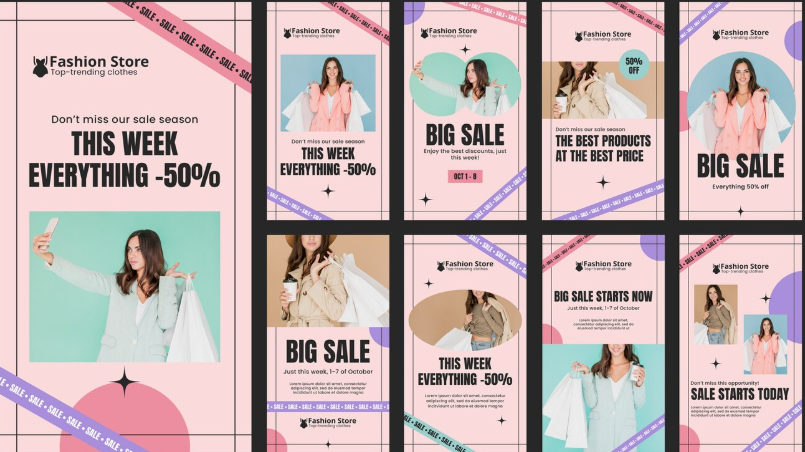
In the crowded world of streetwear, a strong brand identity is what will set you apart and create a loyal following. This identity is composed of your brand’s name, logo, visual style, and the story or message behind it. Crafting these elements thoughtfully is essential – they will influence everything from your designs to your marketing and how customers perceive you. Let’s break down each component:
Brand Name: Your name is often the first impression. Great streetwear brand names are usually short, memorable, and evocative. Think of Supreme, Stüssy, Off-White, FTP, Palace – each is 1-2 words, easy to say, and carries a vibe. When brainstorming your name, consider the feeling or idea you want to convey. Do you want it to sound edgy and rebellious? Chill and minimalist? Perhaps it's an acronym or a made-up word that has personal meaning.
A few tips for choosing a name:
-
Keep it simple: It should be easy to pronounce and spell. If people can’t say it or search it, that’s a hurdle. A unique word is fine (e.g., “Undefeated”), but make sure it’s not too long or complicated.
-
Make it distinct: Ensure no one in streetwear or fashion is already using a similar name to avoid confusion or legal issues. Do some googling and social media searching. You want a name that you can own (including as a domain name and Instagram handle ideally).
-
Reflect your brand values: If your brand has a focus (say eco-friendliness, or a certain subculture like skating or music), the name can hint at it. For example, a brand inspired by 90s hip-hop might pick a name that nods to a lyric or slang from that era. However, it doesn’t have to be on-the-nose – abstract names can work too if you give them meaning through your story.
Once you have a shortlist, say them out loud, imagine them on a t-shirt neck label, ask friends for feedback. Your brand name sets the tone. It’s okay if at first it feels a bit unfamiliar – any new word does – but you should at least feel proud and connected to it, since you’ll be saying it a million times.
Logo Design: The logo is the visual emblem of your brand. In streetwear, logos can become as iconic as the clothes (think of Nike’s Swoosh or Supreme’s red box logo). When designing your logo:
-
Decide on form: Will it be a wordmark (just stylized text of your brand name) or an icon/symbol or a combination? Many streetwear brands actually use text-based logos – either in a specific font or custom lettering. If your name is unique, a strong wordmark can be very effective (e.g., the stylized script of Stüssy is essentially just the founder’s handwriting, which became legendary). Alternatively, you might create a symbol that represents your brand ethos (like Off-White’s diagonal stripes or Palace’s triangle). Symbols are great for versatility (people can recognize it without the name spelled out), but they often come after you establish the wordmark, unless the symbol is inherent in the name.
-
Keep it versatile: Your logo should look good in one color, as most printing or embroidery will often use a single-color version for simplicity. It should also be scalable (looks clear both small on a tag and large on a shirt). Avoid extremely intricate details that won’t translate well. Bold, clean designs work well.
-
Be unique but not overdone: It’s worth putting thought or hiring a graphic designer for your logo because it’s so core. Look at designs in and out of the industry for inspiration, but don’t copy. You want something that when people see it, they eventually associate it only with you. Sometimes even a simple shape can be strong if you use it consistently.
-
Color and font: If going for a wordmark, choosing the right font or creating a custom typography is key. Fonts convey mood – blocky sans-serif might feel modern and strong, while gothic script feels vintage or metal, etc. Color-wise, have a primary logo color (many opt for black or white for flexibility), but you can adapt it to different contexts. E.g., your main logo might be black text, but on a black hoodie you’ll use a white version. Make sure it works in different colorways.
Many streetwear logos are minimalist because they end up being printed or embroidered a lot. Think how it will look as a small chest embroidery or a sleeve print.
Brand Story and Mission: This is the soul behind the brand – why it exists. Streetwear has always been tied to communities and subcultures, whether it’s skate, hip-hop, punk, art, activism, etc. Your brand story is what resonates emotionally with customers and turns them from one-time buyers into fans.
To craft your story, consider:
-
Your personal inspiration: Did you start this brand because you felt a lack of representation in streetwear for something? Or to pay homage to a culture or hometown? For example, maybe you grew up in a particular city neighborhood that influences your style and you want to share that vibe with the world. Or maybe your brand is about positivity and mental health in youth culture because of your own journey. These personal roots make the story authentic.
-
Core message or theme: Perhaps your brand stands for empowerment (“streetwear for the hustlers and go-getters”), or sustainability (“eco-friendly urban apparel to change fashion’s footprint”), or rebellion (“a big F-U to establishment, through graphic tees”). Having a thematic pillar helps guide your designs and content. It doesn’t have to be overtly political or anything unless that’s your aim – it could be as simple as “celebrating anime and hip-hop crossover culture” – anything that defines you.
-
Tell it consistently: You should articulate your story in a concise way, like a couple of sentences or a paragraph, that you can put on your website’s About page or even a hang tag. It might outline when you started, what inspired the name, and what your mission is. For instance: “XYZ Brand was born in 2025 out of the skateparks and art studios of Los Angeles. Frustrated with fast-fashion’s waste, our founder set out to create a label that merges bold design with sustainability. Every piece of XYZ tells a story – from graffiti-inspired graphics to the organic cotton we print on – reflecting our belief that streetwear can spark change. Our mission: keep it authentic, eco-conscious, and always for the culture.” This sort of blurb gives customers something to connect to beyond just the clothing.
As branding experts often advise, “your brand should tell a story that’s uniquely yours.” Don’t shy away from being specific. Ironically, the more niche or genuine your story is, the more it can appeal to people (because it stands out and feels real). Streetwear consumers, especially, can sniff out what’s fake or just trying to cash in. Being transparent about who you are and what you stand for builds trust and a sense of community. If you have interesting behind-the-scenes aspects – like you design everything yourself in your bedroom, or you collaborate with local graffiti artists, or a portion of proceeds supports a cause – weave that into your narrative.
Visual Identity: Alongside name and logo, think about the overall visual style of your brand. This includes:
-
Color scheme: Do you have brand colors? Some brands stick to neutrals, others have a signature color (like how Off-White often uses yellow caution-tape motifs, or how Pink Dolphin used bright aqua and pink). Your brand colors can show up in your website, packaging, and even recurring in designs.
-
Aesthetic and imagery: If your brand were a person, how would they dress and what environment are they in? Are you gritty and urban? Futuristic and techy? Vintage 90s vibes? This will influence your lookbooks, social media content, etc. For example, if your story is tied to 90s skate culture, maybe you favor grainy film photography and zine-style collages in your visuals. Consistency here creates a cohesive brand world that people can enter.
-
Fonts and design elements: Beyond the logo font, perhaps choose a couple of fonts for use in lookbooks, website, or shirt text that match the vibe. Also, elements like patterns, symbols, or motifs that might repeat. Some brands have secondary logos or icons (e.g., BAPE has the ape head, Nike has “Just Do It” text). You can develop a set of brand assets.
Voice and Tone: Brand identity isn’t just how it looks, but also how it speaks. Are you going to be edgy and controversial in your captions, or positive and motivational, or sarcastic and meme-y? Define a tone that fits your target audience. Many streetwear brands use a casual, colloquial tone – they speak the language of their community. If your brand is rooted in activism, maybe your tone is more inspiring and urgent. If it’s luxury-street, maybe you keep it minimal and cool. Having a consistent voice in your social media, product descriptions, and even how you interact with customers (like responding to comments) will reinforce who you are as a brand character.
Community Building: A strong identity and story naturally lend themselves to building a community around your brand. Streetwear brands often feel like clubs or movements. Encourage customers to be part of the story. You can do this by sharing user photos, telling their stories, or involving them in design ideas (some brands do polls or contests for new designs). When people wear your clothing, they are essentially joining your tribe and broadcasting your message. Make that tribe something people want to join because it represents something cool or meaningful.
Authenticity is Key: Don’t manufacture a story that isn’t true to you – streetwear consumers value authenticity above all. If your brand narrative is just “we thought it would be cool to make money selling tees,” that won’t win hearts (even if it might be partly true as a business, you need a cultural reason to exist). Dig deep into why you care about this brand and this style. Maybe it’s the music you love, the art you do, the friends you skate with – incorporate those genuine parts.
For example, Supreme started as a skate shop – its brand identity is steeped in NYC skate culture and punk attitude, and 25+ years later, that DNA still shows in everything they do, from lookbook attitude to collabs with bands or artists. On a smaller scale, you can emulate that by staying true to your roots. Collaborate or reference the things that influenced you. If your brand is named after a city or area code, keep representing that area in your designs or content.
Evolving Story: Brand identity isn’t static. It can evolve as you grow. But having a solid foundation (name/logo/story) from the start will guide you. You might add chapters to your story (maybe down the line you shift focus to new themes or expand your mission), but the core values often remain. Don’t worry if it’s not perfect at launch – brands refine their identity over time. The key is to start with an identity that is clear and resonant. People should be able to grasp what your brand is about fairly quickly – whether that’s through a tagline, or the style of your first collection, or your social media presence.
In practice, make sure all the elements align: Name + Logo + Story + Visuals should feel like they belong to the same world. If your name is gritty but your visuals are super polished corporate-looking, there’s a mismatch. If your story is about positivity but your logo is an aggressive skull, that could confuse people. Aim for cohesion. Sometimes making a mood board helps – collect images, colors, logos, etc., that reflect the vibe you want. That will keep you on track as you create each piece of the identity.
To conclude, crafting your brand identity is as important as designing the clothes themselves. In streetwear, customers often buy the brand meaning as much as the product. A strong identity builds brand loyalty – someone wearing your shirt isn’t just wearing a cool design, they’re repping your brand ethos. When done right, your brand name and logo become badges of belonging for your community. And as the saying in branding goes, “People don’t buy products, they buy stories.” Your unique story and identity will be the magnet that draws people in and keeps them connected in the long run.
The Legal Side of POD: Avoiding Copyright Infringement in Streetwear
Streetwear thrives on bold graphics and cultural references – but as a brand owner, you need to be very careful with intellectual property (IP). Using images, logos, or phrases that you don’t own or have rights to can land you in serious legal trouble. Big streetwear lawsuits have happened (remember Supreme vs. Supreme Italia, or various brands getting sued for ripping off artworks or logos). Print-on-demand platforms themselves also have strict policies: if you upload infringing content, they might remove it or ban you. So let's cover how to stay on the right side of copyright and trademarks while building your brand.
Copyright vs. Trademark: First, understand the basics:
-
Copyright protects original creative works – like artwork, photographs, graphics, characters, even music lyrics. If someone created an image or design, they (or their employer) automatically have copyright to it (with very few exceptions like public domain items). In streetwear context, that means you generally cannot use images you found on Google or social media (e.g., a random anime picture or a photo of a celebrity) on your t-shirts without permission. That’s someone else’s creation.
-
Trademarks protect brand names, logos, and slogans that identify products or companies. For example, the Nike Swoosh, the word “Supreme” in apparel context, or even something like the phrase “Just Do It” are trademarked. You cannot use others’ trademarks on your designs either (no, you can’t slap the Nike logo next to your design as a joke – that’s infringement).
-
Personal Likeness: Relatedly, using a person’s image (especially a celebrity or fictional character) can violate right of publicity or copyright (e.g., a drawing of Mickey Mouse is a Disney copyright; a photo of Kanye West has a photographer’s copyright and Kanye’s publicity rights).
Rule of Thumb: Never use copyrighted or trademarked material without permission.This is the golden rule echoed by all POD guidelines and legal advisors. It’s just not worth the risk. Printing a shirt with say, Marvel’s Spider-Man or the Louis Vuitton monogram or a famous album cover – these will almost certainly get flagged and could result in legal action or at least a cease-and-desist. Even if you see lots of knock-off designs on Etsy or Redbubble, those folks are taking a risk (and many do get taken down eventually).
Originality is King: Make sure the graphics and phrases you put on your clothing are original creations or properly licensed. If you’re designing them yourself from scratch, great. If you’re hiring an artist, ensure they create original work (not copy-pasting someone else’s art). You should have an agreement that gives you rights to use the work commercially. If you want to incorporate existing elements (like a classic painting or a common symbol), check if it’s in the public domain (works typically enter public domain many decades after the creator’s death, depending on laws). For example, anything created before like 1927 is mostly public domain now – so classical art or very old illustrations can be used freely. But be cautious: just because something is “old” or “on the internet” doesn’t mean it’s free to use.
Parodies and Fair Use: Streetwear sometimes plays with known logos or cultural icons in a satirical way. There’s a concept of Fair Use – for example, parody or commentary can be a defense in the US if you get sued. However, this is a gray area and not a guarantee. Fair use doctrine has several factors, one of which is whether the use is transformative and for commentary or parody, and importantly, whether it’s for commercial gain. Selling merchandise is definitely commercial. Parody can be protected (like a t-shirt that cleverly parodies a brand or political figure might be okay), but it’s a risky line. Many brands have gotten cease-and-desist for parody designs that the original company didn’t appreciate. Example: creating a shirt with a twist on a famous logo – sometimes small brands get away with it in limited runs, other times they get shut down fast. If you’re going to attempt parody, ensure it’s clearly a parody/commentary (not just using a logo for cool factor) and understand you may face challenges. A safer approach when small is just to avoid it.
Common Pitfalls in Streetwear Design:
-
Don’t use band logos or album art without permission. Even if you love an artist, you can’t legally sell merch with their images or lyrics unless it’s licensed. Many PODs will actually auto-flag famous names and lyrics during upload.
-
Avoid sports team logos or player images – those are trademarked or individuals have rights.
-
Don’t use brand names in your product titles or designs (e.g., calling a design “Gucci-inspired” on your store could get a trademark takedown).
-
Watch out for stock images – if you use any, ensure the license allows merchandise use (many free stock photos or vectors are NOT allowed to be used on items for sale unless you buy a special license).
-
Fan art of characters (anime, comics, games): legally, this is infringement if sold. Some companies tolerate small artists selling fan art, others like Disney or Nintendo can be strict. POD platforms often ban it due to legal risk. It’s best to create original characters or get permission.
-
Using celebrity faces: printing a shirt with a celebrity photo or portrait – that’s typically not allowed unless it’s your original artwork and even then you might infringe on their publicity rights or the photographer’s rights.
Print-on-demand providers like Printful, Printify, etc., have content policies and often a system to catch IP terms or images. If you try to upload something with “Star Wars” or an obvious copyrighted image, they likely will warn or block it. They do this because they’ve gotten pressure from IP owners (for example, DCMA takedown notices) and they want to avoid lawsuits themselves. Printify’s blog explicitly guides that you should put original content first and not copy trending designs too closely.
Consequences of Infringement: If you violate copyright or trademark, a few things can happen:
-
The IP owner could send a DMCA takedown to your platform (Shopify, Etsy, etc.) or POD provider, forcing removal of the product.
-
Repeated issues could get your account banned from the platform.
-
In worst cases, you could face a lawsuit for damages. Copyright law can award statutory damages up to $150,000 per willful infringement in the US – even if you made far less money, they can hit you hard to set an example.
-
Even without a lawsuit, you might have to destroy unsold inventory (not an issue in POD, since no inventory) and cease selling, which can kill a product line.
-
It damages your brand’s reputation; being known as a copycat is not good in the streetwear community either.
How to Stay Safe and Creative:
-
Create original art. Invest in a good designer or develop your own style that isn’t just ripping famous imagery. Building your brand’s own iconography is ultimately more rewarding than piggybacking on others’.
-
License content if needed. If you really want to use a particular photo or graphic not yours, see if you can license it. For example, some photographers or artists might license their work for a fee or royalty. There are also content you can license via agencies. Make sure you get “merchandise rights.”
-
Public domain/CC0 resources: There are some libraries of public domain images or Creative Commons 0 (no rights reserved) graphics. Just double-check they truly are free to use commercially. Even so, it’s good to modify or remix such content into something unique to avoid many people having the same design.
-
Trademarks: Check USPTO or trademark databases if you plan to use a word/phrase as your brand or slogan on shirts. For instance, trademark issues can arise if you put a phrase on a shirt that another apparel company trademarked for clothing. It’s less common for general phrases, but if it’s a known tagline, be wary.
-
Document your originality: In case of any false claims (it happens, sometimes someone might wrongly accuse you of copying their generic idea), have source files and sketches to prove you created your designs originally.
-
Avoid confusion: Legally, trademark infringement hinges on whether a consumer would be confused that your product is from the trademark owner. So if your shirt design could make someone think “is that an official collab with X brand or using X’s logo?”, you’ve gone too far. Keep your branding clearly distinct.
Example - Avoiding a Common Trap: Let’s say you want to do a shirt with a throwback vibe to a famous cartoon. Drawing that cartoon character exactly – illegal. Instead, you might create an original character inspired by that style but not identical. Or if you want to reference a meme or internet culture (some of which use copyrighted images), consider recreating it originally. For instance, you wouldn’t legally print the classic “Doge” meme photo as is, because the photographer owns it. But you could draw your own cartoon shiba dog with a funny phrase (as long as the phrase itself isn’t trademarked). Original twist is key. Ideas aren’t protected, but specific expression is. You can make designs about general concepts or trends – just don’t copy specific art.
Streetwear and IP: Many streetwear designers actually play a game of how close to the line they can get (like “bootleg” style designs that mimic luxury brands or flip logos creatively). It’s almost a sub-genre. If you go that route, know it’s risky. Some have built notoriety from cease-and-desist letters as a badge of honor, but also plenty have lost in court. It’s a strategic decision – as a new brand, you likely want to minimize legal battles and build your own identity rather than borrow others’.
Protecting Your Own IP: As you create original logos and designs, you might also consider protecting them. For instance, you might trademark your brand name and logo once you gain traction, to prevent copycats. Copyright for your designs is automatic when you create them, but registering them (with the Copyright Office, if in the US) can give stronger enforcement ability if someone else rips you off. It's something to consider down the line. Many small brands find their designs stolen by overseas producers; having legal grounds to fight that (or at least to DMCA them) can help.
Platform Resources: Familiarize with your POD platform’s IP guidelines. Printful has a great blog on “Can I Print That?” explaining what's allowed. They emphasize: if you didn’t create it or get permission, don’t print it. They also mention how even large companies get in trouble inadvertently – so nobody is immune, and ignorance is no defense.
In Summary:
Be original, cautious, and respectful of intellectual property. It's absolutely possible to build an amazing streetwear brand without ever infringing on someone’s rights – in fact, the most iconic brands are the ones others end up copying, not the ones who copied others. By making your own mark creatively, you not only avoid legal headaches, but you also establish a brand that’s uniquely yours and can stand the test of time. Remember that customers appreciate authenticity; part of that is knowing your designs are genuinely from you and not lifted.
So go ahead and remix culture, draw inspiration from anywhere – but transform it into something new that you can call your own. When in doubt, leave it out (or consult an IP lawyer for tricky cases). Keeping things above board legally will let you sleep easier and focus on growing your brand, instead of dealing with takedowns or lawsuits. As Printify wisely suggests, your content should be original even if ideas aren’t – you can follow trends or reference themes, just put your unique spin and creativity into it. Stay legal, and your brand can thrive without unwanted interruptions.
FAQ for Streetwear Print on Demand
Q1: What is Print on Demand and how does it work for a clothing brand?
A: Print on Demand (POD) is a fulfillment model where products are produced one at a time, only after an order is placed. For a clothing brand, this means you can upload your designs for items like tees or hoodies, list them for sale online, and your POD supplier will print and ship each item to your customer on-demand.
Q2: Can I actually make a profit with print-on-demand streetwear, given the higher base costs?
A: Yes, you can be profitable – but you have to price your products smartly and build perceived value. POD base costs are higher than wholesale bulk, so your margins per item will be thinner unless you price at a premium. Many streetwear brands successfully charge $30–$40 for tees and $60+ for hoodies that might cost half that to fulfill, achieving a ~40-50% margin.
Q3: How do I ensure the quality of my print-on-demand products?
A: Start by choosing a reputable POD supplier known for quality printing and good garment blanks. Look for providers with high user ratings and those who offer premium apparel options (for example, brands like Bella+Canvas, AS Colour, or Champion blanks). Always order samples of your products before selling them – this lets you check print clarity, color accuracy, fabric feel, and sizing.
Q4: Which print-on-demand supplier is best for a new streetwear brand?
A: It depends on your priorities. Printful is often recommended for top-notch print quality and a wide product range (including embroidery and all-over prints) – great if quality and reliability are paramount (albeit at slightly higher base cost). Printify is excellent if you want the lowest costs and lots of product choices; it connects you to various print providers, so you can pick ones that fit your needs (just do quality research on the providers). CJdropshipping is a strong option if you want a mix of POD and non-POD products and fast shipping (especially in the US) with things like private labeling services.
